
Top 10 LinkedIn Tips on Mastering Objectives & Bid Strategies
Looking to increase your return on ad spend (ROAS) on LinkedIn?
Your bidding strategy and campaign objective play a critical role.
Here’s my 10 tips from over $10 million investment in LinkedIn paid ads.
(In no particular order, they all matter)
TABLE OF CONTENTS
- Tip #1: The Power Behind Manual Bidding
- Tip #2: Fine-Tuning Your Bids
- Tip #3: Aligning Ad Type & Offer with Objectives
- Tip #4: The Optimal Objective for Thought Leader Ads
- Tip #5: When to Leverage Video Views Objective
- Tip #6: Match Your Content to the Most Suitable Objective
- Tip #7: Take Advantage of Document Ads
- Tip #8: Scale Conversions with Conversation Ads
- Tip #9: Top 3 Objectives for Single Image Ads
- Tip #10: When to Avoid Reach Objective (Brand Awareness)
- Conclusion:
- Resources for Mastering B2B Advertising
Tip #1: The Power Behind Manual Bidding
Unlike automated bidding, which leaves bid amounts at LinkedIn's discretion, manual bidding allows advertisers to set clear cost boundaries.
This ensures that your campaign expenses align with your budgetary constraints and campaign goals, offering a level of precision that automated bidding simply can't match.
By specifying the maximum amount you're willing to pay for clicks, the manual bidding places you in the driver's seat.
The LinkedIn algorithm, while powerful, may not always allocate your budget most economically when given full control.
Start collecting data quickly for your new campaign by bidding above the minimum threshold recommended by LinkedIn.

When to Consider Automated Bidding:
Automated bidding can be the best choice for specific situations, such as focused Account-Based Marketing (ABM) or retargeting campaigns with small audiences.
Once the campaign starts spending and there’s a benchmark, you can switch to manual bidding to regain full control.
Tip #2: Fine-Tuning Your Bids
A successful manual bidding requires daily checks on your spending against your budget to avoid overbidding or underbidding.
This is a straightforward yet insightful process, comparing the previous day's spend against the current daily budget to adjust your bids for optimal performance.
The Process of Bid Adjustment:
By subtracting your daily budget from the previous day's total spending, you gain clear insights into your bidding strategy's effectiveness.
A negative result suggests underbidding, where you're not fully utilizing your daily budget
While a positive result indicates overbidding, where you're potentially overspending.
“Previous day spent - allocated budget = + number indicated bid is too high
The previous day spent - allocated budget = - number indicated bid is too low”
One challenge of manual bidding is finding the sweet spot where your bid is high enough to consume your daily budget fully but not so high that it leads to inefficient spending.

Side note:
If your audience size is too small, even a high bid will not cover the campaign’s full budget.
Tip #3: Aligning Ad Type & Offer with Objectives
LinkedIn ad campaigns' success deeply depends on the alignment between the chosen ad type and the content you're promoting.
Understanding the nuances of each ad + offer and matching it to the applicable objective is key to maximizing engagement and conversion rate.
Selecting the Right Ad Type for Your Objective:
Video Ads:
When promoting video ads, gravitate towards the Video View or Engagement objectives.
These objectives are designed to maximize viewership and interaction with your video content, making them ideal for capturing and retaining audience attention.
Example of a video ad:

Document Ads:
The Engagement objective tends to yield the most success for document ads, which include PDFs, presentations, and other downloadable content.
Keeping document ads ungated and focusing on engagement allows your content to reach a broader audience, enhancing brand visibility and thought leadership.
Example of a document ad:

Single Image Ads:
Engagement and Website Traffic objectives can be effective when using single-image ads.
Your choice depends on whether your primary goal is to foster interaction with the ad or drive traffic to your website or landing page
Example of a single image ad:

Tip #4: The Optimal Objective for Thought Leader Ads
If you're looking to boost your presence and authority on LinkedIn, thought leader ads present an attractive option.
These ads turn organic content from individual profiles into sponsored messages, maintaining the authentic voice and personal touch that resonates with audiences.
These campaigns can achieve lower costs per engagement by leveraging the engagement objective, enhancing their effectiveness and reach.
Understanding Thought Leader Ads:
Personal Touch:
Unlike standard ads that originate from company pages, thought leader ads come from personal profiles, offering a humanized approach to advertising.
This method harnesses the inherent trust and relatability of individual thought leaders, amplifying their messages across targeted audiences on LinkedIn.
As of March 2024, businesses can promote content from any connected user on LinkedIn with Thought Leader posts, as opposed to just verified employees.
Seamless Integration:
To the audience, thought leader ads appear as regular posts but with the added benefit of targeted reach and visibility.
This seamless integration into the newsfeed portrays a natural engagement experience, hence fostering higher engagement rates compared to traditional ad formats.
Implementation and Best Practices
The success of thought leader ads hinges on selecting organic content that has already demonstrated shares and engagement.
By sponsoring high-performing posts, you capitalize on proven interest and ensure your ad budget is allocated to content with the highest potential return.
Pro tip:
When creating a new single-image campaign, you can click “browse existing content” to find the post by searching for the LinkedIn member and sending a request for approval.
Since these ads will not be sent to a landing page, it’s best to place the intended page link in the first comment and pin the comment.


Tip #5: When to Leverage Video Views Objective
When promoting video ads, selecting the Video View objective will increase the likelihood of getting the highest percentage of videos watched at the lowest cost.
This objective is designed to maximize the number of views your video receives, optimizing for visibility and engagement among your target audience.
Creative Specifications:
For video creatives, the recommendation is to use a square format (1080x1080 pixels) and include captions.
This format is not only visually appealing but also takes up the most space in the feed property.
Cost Efficiency and Performance:
The cost for video views on LinkedIn typically ranges from 10 to 15 cents per view.
While this might be higher compared to other platforms like YouTube, which has been gaining traction in B2B sectors for its cost-effectiveness, LinkedIn's targeted audience can justify the investment.
Best Practices for Video Campaigns on LinkedIn:
Starting with the lowest feasible cost per view (CPV) in your bidding strategy can help manage costs while assessing the content's performance.
Adjustments can be made based on initial results to find the optimal balance between reach and budget efficiency.
Tip #6: Match Your Content to the Most Suitable Objective
Understanding the type of content you're promoting determines the most effective objective and ad type for your campaign.
For event promotions, for example, certain ad formats have proven to yield higher results and drive registrations at a lower cost.
Let’s break down what type of assets yield the highest results for this example:
Lead Generation Forms (LGF):
The premier choice for driving event registrations.
Lead-gen forms provide a seamless and streamlined user experience, with pre-populated forms making the conversion process as frictionless as possible.
The convenience of instantly filling out forms within the LinkedIn platform significantly increases conversion rates for registrations.

Pro tip:
To improve the performance of LGF, it's best to keep the number of custom fields below three.
While leveraging pre-populated fields can maintain high conversion rates, adding more than two custom questions or actions can deter completions.
Event Ad Format:
This is one of the most effective ad types for event registries, but it is important to note that it cannot be combined with any of the conversion objectives.
Unique to this type of ad is the inclusion of social proof directly within the ad, such as the number of people who have shown interest or are planning to attend the event.
While its conversion rate may not match that of Lead Generation Forms, the added visibility and credibility from social proof make Event Ads a valuable tactic.

Website Conversion:
Directing users to a landing page for event registration is generally less preferred due to higher costs and lower conversion rates compared to previous tactics.
Exceptions exist, such as directing traffic to a calendar link or for specific targeting scenarios, but overall, this method is seen as less efficient for event promotion.
Design and Copy Considerations:
For campaigns opting to use landing pages, prioritizing copy over design is key.
The hero section, or above-the-fold content, is critical in capturing user interest.
Ensuring message consistency between your ads and landing page, alongside efficient conversion tracking, will set you up for success.
To learn more about landing page best practices, dive into the article below by Pedro Cortés:
10 Proven Landing Page Tips To Boost Your Conversion Rates
Pro-tip:
Streamlining Campaign Tracking with Dynamic URL Parameters:
LinkedIn's introduction of dynamic URL parameters at the campaign level presents a major leap forward in simplifying and enhancing tracking capabilities.
This feature allows marketers to set up the tracking once for the entire campaign, eliminating the tedious process of manually tagging each ad with unique UTM parameters.

Tip #7: Take Advantage of Document Ads
Document ads have proven highly effective for marketers looking to deepen engagement and build a robust retargeting pool.
They typically have impressive click-through rates, often reaching 6-7% or higher.
The best results from document ads are seen when paired with the engagement objective.
Users who interact with this ad type demonstrate a clear interest in your content, making them ideal candidates for subsequent, more targeted marketing efforts.
For more information on setting up your first document ads, check out this guide provided by LinkedIn
Tip #8: Scale Conversions with Conversation Ads
Conversation ads offer a unique, direct method of engaging with your target audience by delivering messages right into their LinkedIn inboxes.
These ads are billed on a cost-per-send basis, making it crucial to manage bids effectively to maximize both reach and budget efficiency.
Start your bid as low as possible and make adjustments depending on how well it’s pacing.
A good starting point is a $1 bid.
Due to LinkedIn’s second-price auction model for convo ads, they typically keep the actual cost close to the average historical cost per send.
This model charges you just enough to outbid the next highest bidder, not the maximum amount you're willing to pay.
Adaptation to Platform Changes:
Despite recent updates like the focus inbox change on LinkedIn, conversational ads have continued to perform well.
The direct nature of these ads keeps them effective, maintaining their status as a top-performing ad type.
Best Practices for Conversational Ads:
Because convo ads are more intrusive than other ad types, it’s important to ensure your targeting is precise. This precision prevents user annoyance and increases the likelihood of engagement.
The content of your conversation ads should be compelling and offer clear value to a specific job function.
Pro-tip:
The sender should resonate with the target audience for the highest credibility.
Choosing someone with a similar job function or an industry expert/influencer can immediately boost credibility.
For additional tips on convo ad’s best practices, check out this post by AdConversion

Tip #9: Top 3 Objectives for Single Image Ads
Single-image ads are versatile and can be tailored to meet various objectives, but understanding which objective to prioritize can have a noticeable impact on the effectiveness of your campaigns.
Lead Generation:
The primary objective for many single-image ad campaigns is lead generation.
LinkedIn’s Lead-gen focuses on gathering user information through forms that are pre-populated with LinkedIn profile data, making it easier for users to submit their information without leaving the platform.
Engagement:
The second most common objective for single-image ads is engagement.
This objective aims to maximize interactions such as likes, comments, and shares.
It's particularly useful for increasing brand visibility and engagement within your target audience.
Fostering interactions also enhances the organic reach of your ads through the network effects of user engagement.
The visual appeal and message of your single-image ad should resonate with your audience and encourage interaction.
Regular testing and adaptation of your ad creatives can help maintain high engagement levels.
Website Visits:
The third objective focuses on driving traffic to your website or specific landing pages to achieve conversions.
Whether your goal is to increase sign-ups, sales, or another conversion action, directing users to your website allows for more detailed tracking and nurturing of potential leads in your sales funnel.
Tip #10: When to Avoid Reach Objective (Brand Awareness)
Brand awareness, which prioritizes impressions and broad visibility, often comes under scrutiny due to its cost implications and lower engagement metrics compared to other objectives.
The reach objective operates on a cost-per-impression (CPM) model, where you are charged each time your ad is displayed, regardless of user interaction.
This can lead to higher expenditure without the guarantee of equivalent engagement or conversions.
The inherent nature of paying for mere visibility rather than actionable engagement makes this objective less appealing for many advertisers seeking tangible returns on their investment.
This objective is also inefficient for retargeting.
Building retargeting audiences requires not just impressions but meaningful interactions that signal interest or intent.
The reach objective's focus on maximizing views rather than fostering engagement makes it less effective for gathering a meaningful contribution toward the retargeting pool.
Conclusion:
In this article, we covered 10 actionable tips for matching the most suitable objectives and bidding strategies to your LinkedIn campaigns.
Whether it’s choosing manual bidding to control costs, aligning ad types with your marketing objectives, or understanding when to leverage specific ad formats, each tip offers a pathway to better performance.
By implementing these top 10 tips, you can navigate through the complexities of LinkedIn paid ads with greater precision and efficiency.
I hope you found this article insightful and that it leads to successful outcomes for your future campaigns.
If you’d like to reach out or get more tips, please connect with me via LinkedIn.
Resources for Mastering B2B Advertising
If you’re serious about mastering B2B advertising then you definitely need to join 1,000+ B2B marketers leveling up their paid advertising skill sets in AdConversion.
Here’s 4 reasons why you should consider joining. Every one of our on-demand courses are:
✅ 100% free access.
✅ Taught by vetted industry experts.
✅ Have workbooks, resources, and templates.
✅ Less than 10 minutes per lesson.
We believe every marketer should know how to scale paid ads so they can:
- Scale their ideas
- Level up their careers
- Make a positive impact
Click Here to Join 1,000+ B2B Marketers Today and start leveling up your advertising skill set.
Takes < 90 seconds to sign up (seriously we timed it 😂)
Other Articles You May Enjoy.

10 Insider Tips on Event Promotion From $1M+ In Ad Spend
Looking to boost registrations for your next event?
I’ve been a part of a team that has driven 10,000+ registrations for events like Ascend, and Innovation Day.
Here are my top 10 event promotion best practices for increasing registrations through paid ads.
(In no particular order, they all matter)
TABLE OF CONTENTS
- Tip #1: The Four-Stage Framework for Event Marketing
- Tip #2: Utilizing Partnerships & Internal Networks
- Tip #3: Mastering Segmentation & Efficiency
- Tip #4: Remarketing Mastery: Capitalizing on Targeted Engagement
- Tip #5: Cross-Channel Integration
- Tip #6: Geo-Targeted Ads: Precision Marketing for Event Success
- Tip #7: Gamification: Turning Engagement into a Competitive Advantage
- Tip #8: Display Advertising & Maximizing Visibility
- Tip #9: Remarketing Campaigns: Sharpening the Focus for Better ROI
- Tip #10: Mastering ROI: The North Star of Marketing Success
- Conclusion
- Resources for Mastering B2B Advertising
Tip #1: The Four-Stage Framework for Event Marketing
Maximizing ROI on event marketing demands more than just throwing money at promotions.
It requires a carefully structured budget across four critical stages:
- Pre-Event
- Event-Day
- Post-Event
- Repurpose-Phase

Let’s break down each stage.
1/ Pre-Event: The Hype Machine:
The goal here is to generate buzz and build anticipation. It's about investing wisely in creating brand awareness with assets like videos, static images, that get people excited and start conversations.
The aim? To discover what truly resonates with your audience.


2/ During the Event Day: Capturing Attention:
As the event unfolds, there's a golden opportunity to keep marketing with timely emails and live updates.
It's not just about informing; it's about keeping the engagement needle moving by reminding attendees of the value they're getting, right as it happens.

3/ Post-Event: Leveraging Assets:
Post-event, the focus shifts to capitalizing on the event's content.
Recorded sessions and dedicated landing pages become key tools in extending the event's lifecycle.
How? By marketing these assets to both attendees for reinforcement and to those who missed out, providing them a chance to engage.

4/ After The Event - The Repurpose Phase:
Finally, we enter the "Repurpose-Phase," where content from the event transcends its original context.
This is where smart marketers reuse and recycle event content in ads or promotions for future events, turning one-time efforts into long-term assets.

Budget distribution:
Whatever your budget may be, the principle remains the same—allocate strategically.
Invest heavily in the “Pre-Event Phase” to find your audience's pulse and save a portion for the "Repurpose Phase" to fuel future events.
This staggered approach not only maximizes exposure at each stage but also ensures that registrations and engagement peak when it matters most.
Practical Budgeting Example
With a $1,000 budget, consider allocating $600 towards the Pre-event phase to test and refine your marketing approach.
Reserve $200 for live engagement during the event, and use the remaining $200 to promote your post-event content and seed future events, ensuring your marketing efforts continue to bear fruit long after the event has concluded.
Tip #2: Utilizing Partnerships & Internal Networks
When your marketing budget seems like a drop in the ocean, it's time to get creative with what you have.
Even with $5,000 in hand, there's a wealth of untapped potential lying within your LinkedIn connections and internal team networks.
Strategic Content Sharing:
Kickstart your campaign by encouraging your team to engage with your event posts on LinkedIn.
This simple action can significantly boost your visibility, pushing the algorithm into recognizing your content's importance.
Influencer Collaboration:
Whether it's through LinkedIn, Instagram, or niche forums like Reddit, reaching out to influencers with a teaser of your event will extend your reach beyond your immediate circle.
Pro-tip:
Offer influencers engaging assets like short videos to make sharing easier and more appealing. The goal is to make your event resonate within their networks, amplifying your message through trusted voices in the community.

How to Craft Influencer Outreach:
Semrush: When faced with promoting an event with limited resources, leveraging Semrush to identify key content creators in your domain can be a game-changer.
Once you find out which websites are most suitable, cold emails to these targeted individuals proposing collaboration opportunities can open doors to new audiences.

LinkedIn Strategies: Joining LinkedIn groups and engaging with active members can also unearth opportunities for partnership.
It's about finding mutual benefits, even if it comes with a price tag.
Influencers typically have set rates, so budget accordingly. However, when reaching out directly to content creators or platforms, there's more room for negotiation.

Boosting Organic Posts: Another proven method is enhancing your LinkedIn posts organically through employee engagement before opting for paid promotions.
Remember, it's not just about spending money but making every dollar work smarter.
Example of Boosting an organic post for LinkedIn

For additional tips on promoting events, check out this LinkedIn post by AdConversion.
Tip #3: Mastering Segmentation & Efficiency
Let’s start with critical pitfalls to steer clear of.
Broad targeting equals wasted effort.
Dial into the specifics of your audience to ensure your content reaches the right eyes and ears.
- Segmentation is Non-negotiable: Specificity in targeting not only enhances engagement but also optimizes your budget by focusing on the most promising prospects.
- Creativity within Constraints: Don't let the perfect be the enemy of the good. "Good Enough" can often be your best starting point. Launch with what you have, then adapt and improve.
- ROI vs. ROE: While ROI (Return on Investment) reigns supreme, don't overlook the ROE (Return on Effort).
Evaluate the potential returns against the effort required. Sometimes, the simplest strategies yield the best results without exhaustive planning and resource allocation.
Pro-tip:
- Launching event promotion comes with its share of delays and edits. Start early and simplify.
- Overcomplicating creative requests can bottleneck the process, jeopardizing your timeline.Embrace minimalism in your initial creative assets.
- Focus on refining the message rather than getting lost in the design details. There will be room to iterate and enhance based on real-world feedback.
Tip #4: Remarketing Mastery: Capitalizing on Targeted Engagement
After laying the groundwork with audience segmentation, remarketing emerges as the strategic follow-through that ensures your message continually reaches those most likely to act.
It’s about reconnecting with website visitors, video-view watchers, image interactors, etc.
Reaching to those who demonstrated interest but haven't yet taken the desired action.
By targeting these engaged users with specific, relevant ads, the probability of conversion (registration) significantly increases.
If you want a crash course on remarketing check out this 35-page blueprint on How to Build a Multichannel B2B Remarketing Strategy by Silvio Perez.

Tip #5: Cross-Channel Integration
Using just one platform for event promotion is like whispering in the midst of a loud crowd.
The essence of cross-channel integration lies in presenting a unified brand narrative across various platforms.
From LinkedIn's precise targeting capabilities to the broad reach of YouTube and the personal touch of Meta's networks, each channel plays a critical role in amplifying your event's visibility.
Platform-Specific Strategies: A Closer Look:
YouTube: Leveraging YouTube for its vast audience and cost-effective view rates turns your event promotion into an engaging visual narrative.
Here, remarketing shines, allowing you to reconnect with interested viewers through compelling video content.
- LinkedIn: With unmatched segmentation options, LinkedIn stands out for B2B event promotion. Tailoring your message to reach specific professional demographics ensures your event resonates with the right audience.
- Meta: Often underestimated in B2B contexts, Meta (Facebook and Instagram) offer a unique space for testing and remarketing. Here, the personal intersects with the professional
Navigating the Creative Challenge:
A common hurdle in cross-channel marketing is content creation, especially video for platforms like YouTube.
The solution? Creativity and repurposing. Utilize existing assets, from high-engagement talks to website walkthroughs, and repurpose them into new video content with minimal effort.
Think of content as modular components that can be assembled and reassembled to suit different platforms.
A blog post can transform into an infographic, a webinar clip, or a social media snippet, maximizing your content's reach and lifespan.

Tip #6: Geo-Targeted Ads: Precision Marketing for Event Success
For events that offer both in-person and virtual attendance options, geo-targeted ads stand out as a proven tactic.
By targeting potential attendees within a specific radius of the event location, you ensure that your advertising dollars are spent on those most likely to attend in person.
Example of Meta’s radius targeting:

Measuring the Impact of Geo-Targeted Campaigns:
Leveraging tools like Gradual allows for detailed tracking of event registrations, distinguishing between virtual and in-person sign-ups.
This segmentation is key in evaluating the effectiveness of geo-targeted campaigns, providing insights into lead quality and audience relevance.
Creative and Tactical Considerations:
While geo-targeting primarily focuses on the pre-event phase, its implications for brand visibility are vast.
Creative tactics, such as mobile digital billboards, can also play a role in maximizing local awareness, even in relation to competitors' events.
Pro-tip
- For events with significant local interest, consider augmenting your digital geo-targeting with physical advertising moves.
- This can create a buzz around your event and ensure your brand remains top-of-mind among your target audience.
Tip #7: Gamification: Turning Engagement into a Competitive Advantage
Gamification: A strategy to break through the noise!
By switching up event promotion into an interactive and competitive experience, you not only capture attention but also foster a sense of community and excitement around your event.
Practical Example
- Offering a free drone to the attendees with the most referrals turns the event sign-ups into an engaging competition.
- This not only increases exposure but also incentivizes participants to become advocates for the event, effectively turning them into an extension of the sales team.
Operationalizing Gamified Content:
Using tools like Gradual, attendees receive a virtual ticket upon registration, complete with a unique referral link for sharing on social platforms.
This system not only simplifies sharing but also tracks referrals back to the source, enabling a competitive leaderboard to emerge.
Tip #8: Display Advertising & Maximizing Visibility
Stepping beyond traditional advertising channels can lead to remarkable visibility.
Display advertising, mainly used through Google Display Network or programmatic ads, holds untapped potential when approached through direct publisher partnerships.
Direct Publisher Engagement:
The strategy here isn’t just to place ads but to place your event promotions on websites specifically relevant to your niche.
By using tools like SEMRush to identify these niche publishers and reaching out directly, you can secure ad placements that speak directly to an engaged audience.
The Operational Dynamics:
Differentiating from the wide net cast by typical display networks, focusing on publisher partnership involves negotiating directly with site owners.
This can range from pop-up ads to dedicated ad slots on their site, leveraging their audience for your event’s gain.
Reducing Variables for Success:
The common pitfalls of display advertising come from an overwhelming array of variables. From ad dimensions and placements to the diversity of websites.
By choosing a direct partnership with publishers, you drastically reduce these variables, focusing on what matters most: context and audience relevance.

Tip #9: Remarketing Campaigns: Sharpening the Focus for Better ROI
We touched on the importance of remarketing in tip #4 but this is such an easy win for most brands that it deserves emphasizing. Since users have interacted with the brand before, remarketing can be ideal for high-intent offers such as "demos" or "free trial". The initial challenge often lies in cultivating a large enough audience size.
Start by building broad prospecting campaigns to stir interest and engagement across your target demographics. This boosts awareness and seeds your remarketing pool with individuals who have shown an initial interest in your offerings.
Remarketing should be viewed not just as a conversion approach but as a nurturing mechanism. With the ability to promote a mix of content—from event announcements to demos and trials—remarketing can support the entire customer journey, especially in B2B contexts where sales cycles are longer.
If you want a crash course on remarketing check out this 35-page blueprint on How to Build a Multichannel B2B Remarketing Strategy by Silvio Perez.
Tip #10: Mastering ROI: The North Star of Marketing Success
Knowing your numbers and directly tying marketing efforts to revenue generation and pipeline acceleration is fundamental. The ultimate measure of marketing’s effectiveness lies in its ability to influence revenue.
Every campaign, ad, and event should be scrutinized through the lens of its potential to contribute to the bottom line. This requires a deep understanding of your audience, the sales cycle, and the points at which marketing interventions can make a tangible difference.
Operationalizing ROI-Focused Strategies:
Quantitative Analysis: Adopt a data-driven approach to every marketing initiative.
This means setting clear, measurable objectives upfront, rigorously tracking performance, and continually refining tactics based on empirical evidence of what works.
- Strategic Alignment: Ensure that marketing activities are fully aligned with broader business goals. Collaboration with sales, product development, and customer success teams can provide valuable insights that help tailor marketing efforts for maximum impact on revenue and pipeline progression.
- Cultivating a Business Mindset: Transitioning from a pure marketing perspective to thinking like a CEO involves a broader appreciation for how marketing activities contribute to the overall health and growth of the business.
It’s about seeing beyond immediate metrics to understand the strategic importance of marketing as a driver of long-term success.
Conclusion
In this article, we covered 10 actionable tips for promoting your next successful event through paid ads.
Just to highlight a few key points, we talked about the 4 pillars of event promotion and how to distribute your budget in each phase, utilizing partnerships & internal networks, audience segmentation, and thinking like an investor to maximize your return on investment (ROI) and return on effort (ROE).
Each of the 4 event planning stages plays an important role, from generating buzz and capturing live attention to extending the event's influence and repurposing its content for future efforts. The power of partnerships, strategic content sharing, and influencer collaborations cannot be overlooked. It’s an effective way of broadening reach without proportionally increasing spend.
Remarketing and audience segmentation are essential for converting initial interest into conversions (registrations), while cross-channel integration expands your digital footprint to reach your audience on all key platforms.
I hope you got a ton of insights from this article and wish you fruitful results for your next events.
If you’d like to reach out or get more weekly tips, please
Resources for Mastering B2B Advertising
If you’re serious about mastering B2B advertising then you definitely need to join 1,000+ B2B marketers leveling up their paid advertising skill sets in AdConversion.
Here’s 4 reasons why you should consider joining. Every one of our on-demand courses are:
✅ 100% free access.
✅ Taught by vetted industry experts.
✅ Have workbooks, resources, and templates.
✅ Less than 10 minutes per lesson.
We believe every marketer should know how to scale paid ads so they can:
- Scale their ideas
- Level up their careers
- Make a positive impact
Click Here to Join 1,000+ B2B Marketers Today and start leveling up your advertising skill set.
Takes < 90 seconds to sign up (seriously we timed it 😂)

10 Tips to Boost B2B SaaS Marketing Beyond Ad Platforms
Are you looking to drive a greater return from your paid ads?
The answer often lies outside of the ad platforms themselves.
Here are 10 actionable tips to improve ad performance outside the ad managers.
Let’s dive into it! 👇
TABLE OF CONTENTS
- Tip #1: Unleash the Power of GA4’s Page Path Report
- Tip #2: Leverage Multiple Data Sources to Measure Performance
- Tip #3: Work with the Product or Service Team to Design Lead Magnets
- Tip #4: Meet with Sales & Customer Success for Insights
- Tip #5: Get Hands-on with Your Product or Service
- Tip #6: Dive Into CRM Metrics for a Holistic View
- Tip #7: Get Regular Insights from the Sales team
- Tip #8: Link Marketing Efforts to Business Results
- Tip #9: Incorporate Leading Indicators into Your Success Metrics
- Tip #10: Practice Patience
- Conclusion
- Resources for mastering B2B advertising
Tip #1: Unleash the Power of GA4’s Page Path Report
Have you ever wondered how visitors wander around your site before hitting that sweet 'convert' button?
In B2B, it's pretty rare for someone to convert after just one page visit. So, imagine discovering that a whopping 90% of your future clients check out your pricing page before deciding you're the one.
That's your cue! With this intel, you can strategically place pricing info where it matters most, like in your ads or on key landing pages. It's all about making that path to conversion as smooth as possible.
GA4's Page Path report is like a treasure map showing you the most popular pit stops.
You can access the page path report by signing into your GA4 account, on the left-hand side, click on “explore” and select the pre-made template called “path exploration”.
In the example below, we can see out of 1,958 page views, we had 17 form submissions ↓

Bonus tip from episode insights:
Tools like Hotjar can be like a pair of X-ray glasses for your website. They let you peek into how users navigate your pages, showing you exactly where they bounce off or get hooked. This information can help tweak your landing page by identifying unaddressed user concerns or areas for expansion.
Tip #2: Leverage Multiple Data Sources to Measure Performance
Effective marketing decisions require more than just ad platform insights.
The in-platform metrics are a great starting point, but what you gain out of it is quite limited.
You can get the initial results for optimization such as CTR, CPC, frequency, open rate, or impression share depending on the channel, but the true source of data would have to be combined with CRM data.
By bringing together data from Google Analytics 4 and your CRM, you can create a multidimensional view of your campaigns' effectiveness.
This is more important than ever before with the deprecation of third-party cookies.
Bonus tip from episode insights:
Ideally, you would have at least 3 supporting data points to back up recommendations.
This is especially true for recommendations that will require a major lift.

Tip #3: Work with the Product or Service Team to Design Lead Magnets
A lead magnet involves providing valuable content in return for information such as a name, email address, job title, and company name.
To stand out, we need to create offerings that genuinely attract and provide value to our audience, moving beyond ebooks and webinars to create lead magnets that are both informative and irresistible.
Rather than offering an e-book that your prospect may or may not find valuable, try offering resources or workshops that speak to the prospect’s unique pain points.
This shift not only aligns with consumer preferences but also sets the stage for more meaningful interactions.
Now, the question still remains: "Do content lead magnets contribute to the pipeline?"
For most B2B SaaS companies, less than 5% of content actually leads to pipeline conversions.
The most effective conversions come from meetings that address the prospect's real issues without any intention of selling them something (absolutely no hidden agendas!).

Tip #4: Meet with Sales & Customer Success for Insights
Use the insights from the Sales and CS team to fine-tune your strategy, offers, audience, ad copy, or any key piece of information that might be misaligned with current campaigns.
Understanding customer pain points, questions, and feedback directly can guide you in creating content that resonates deeply and addresses real needs.
Sales and CS teams possess in-depth knowledge about the demographics, pain points, and motivations of existing customers.
Marketers can leverage this information to refine buyer personas, ensuring that marketing messages and content resonate effectively with target audiences.
Tip #5: Get Hands-on with Your Product or Service
There’s no substitute for experiencing what you’re marketing firsthand.
Dive into demos, use the product daily, or participate in the service being offered.
This deep dive helps you understand the nuances and unique selling points from a user's perspective.
Understanding the core value of the product or services will help you communicate the value proposition when writing your ad copy.
It also provides your clients with a fresh perspective to fill any potential gaps.
If you are not sold on the product/service, then how can you sell it to someone else?

Tip #6: Dive Into CRM Metrics for a Holistic View
Regularly reviewing CRM data helps you see the real-world impact of your campaigns.
This feedback loop is crucial for making data-driven decisions that can improve campaign performance and ROI over time.
3 key metrics you should always consider as a B2B Marketer:
- Pipeline-to-spend ratio
- Average time to close
- Average deal size
If you have not already, request CRM access from your clients so you have context around the key metrics and speak the same language as your clients.
As a marketer, you must connect all activities directly to revenue since that's ultimately what matters most to businesses.
It will make clients see you as a strategic partner in their business.
Tip #7: Get Regular Insights from the Sales team
Adding on to tip #4, the sales team’s daily interactions with prospects and customers are a treasure of insights that can refine your marketing approach.
Often, marketing and sales operate in silos, even though they're both working towards the same goal.
Having a monthly or quarterly meeting with your main point of contact (POC) can help close the gap, but if that is not possible then download the CRM notes to make necessary adjustments to your campaigns.
Bonus tip from episode insights:
If you've got a substantial list of prospects who passed on your offering due to specific reasons (ex: product gaps), you can build an audience list of these closed lost customers and run ads against them when you roll out a new product feature that addresses those concerns.

Tip #8: Link Marketing Efforts to Business Results
Awareness campaigns might not deliver immediate conversions, but their role in nurturing leads and supporting the customer journey is crucial.
Work with other Marketing team members to build case studies and analytics to illustrate how awareness campaigns contribute to overall business goals.
A compelling way to validate the impact of awareness campaigns is to assess the performance disparity between remarketing campaigns and cold audience initiatives.
For example, showing a significantly lower cost per demo from prospects with prior brand exposure can justify the investment for awareness campaigns.
Tip #9: Incorporate Leading Indicators into Your Success Metrics
By understanding what early success looks like, you can refine your strategies in real time, ensuring your marketing efforts are always moving in the right direction.
These leading indicators could be top-of-funnel metrics such as:
- Clickthrough rate (CTR)
- Cost per click (CPC)
- Engagement rate
Leading indicators are vital for navigating the complex B2B landscape, offering the insights needed to steer your marketing efforts toward success, even when immediate sales results are not visible.
Tip #10: Practice Patience
B2B sales cycles are naturally longer than B2C, requiring a mindset that values persistence and long-term strategy over instant results.
By analyzing attribution data and understanding the nuances of traffic sources, you can refine the strategies.
The key is to establish a robust measurement system and integrate leading indicators to track progress.
Recognize and celebrate the small milestones along the way to keep morale high and maintain focus on the long-term goals.
Conclusion
Yielding results for your B2B SaaS marketing is not about quick wins; it's a marathon, not a sprint.
Deeply understanding your product, closely aligning with sales and customer success teams, and strategically utilizing a variety of data sources lay the foundation for sustainable success.
Real growth comes from consistently applying insights, adjusting based on performance indicators, and staying committed to your long-term vision.
Here's to marketing smarter, not harder, and seeing your efforts pay off!
Resources for mastering B2B advertising
If you’re serious about mastering B2B advertising then you definitely need to join 1,000+ B2B marketers leveling up their paid advertising skill sets in AdConversion.
Here’s 4 reasons why you should consider joining. Every one of our on-demand courses are:
✅ 100% free access.
✅ Taught by vetted industry experts.
✅ Have workbooks, resources, and templates.
✅ Less than 10 minutes per lesson.
We believe every marketer should know how to scale paid ads so they can:
- Scale their ideas
- Level up their careers
- Make a positive impact
Click Here to Join 1,000+ B2B Marketers Today and start leveling up your advertising skill set.
Takes < 90 seconds to sign up (seriously we timed it 😂)

B2B Advertising in 2024: The Definitive Guide
Today I’m going to give you a crash course in B2B advertising.
In this comprehensive guide I’ll cover:
- What is B2B advertising?
- 7 ways B2B differs from B2C
- 20 B2B Terms and Metrics you need to know
- Top 3 B2B Revenue Models
- B2B ad examples by revenue model
- How to create a B2B advertising strategy
- The Five Stages Model
- The Best B2B Ad Channels
- Advice from 20 B2B Advertising Experts
So if you need to get up-to-speed on B2B as quickly as possible, you’ll love this guide.
Let’s get started 🔥
What Is Business-to-Business Advertising?
B2B advertising is the process of any paid marketing efforts directed toward influencing multiple individuals within a company for a purchase decision (known as a buying committee) vs a single consumer.
7 Differences between B2B and B2C Advertising:
- Longer sales cycles (3 - 36 months)
- Larger average deal sizes (< $1,000 - $250,000+)
- More stakeholders involved in the purchase decision (ex: c-suite, finance)
- Focus on impacting the entire buyer's journey not just the first conversion (unlike B2C).
- Smaller audiences (< 300,000) with a focus on reaching the right person and company vs B2C with broad audiences ( > 300,000) as more people can purchase your product.
- B2B requires strategic alignment between marketing and sales as you’re joining forces (inbound and outbound) to win accounts.
- B2B supports multiple revenue models, the big three being; product-led, sales-led, and hybrid. Whereas e-commerce is solely product-led.
20 B2B Terms and Metrics you Need to Know
One of the first things you realize when you get into B2B is how much jargon there is! MQL, SQL, ACV, ARR, and the list goes on!
In order to make sure you understand the language, here’s 20 B2B terms and metrics you need to know:
Unfortunately there are many more terms you’ll need throughout your B2B career 😂 and every company creates their own (it’s a constant struggle) but these 20 will give you a solid foundation. For a great list of b2b terms check out our B2B Advertising Glossary.
Top 3 B2B Revenue Models
If you’re working in B2B there are three common revenue models you’ll likely work with.
If your job is to promote this organization, understanding the revenue model is key as it will change everything from how you approach your strategy, the offers you choose, channels, and more.

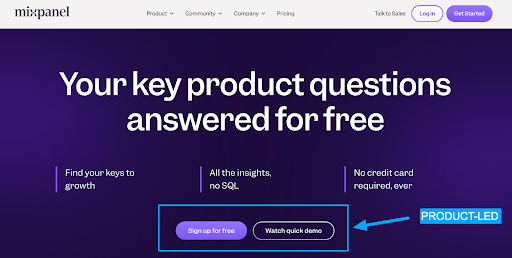

B2B Ad Examples by Revenue Model:
Sales Led
Product Led
How to build a full-funnel B2B Advertising Strategy
Now that you know how B2B differs from B2C.
How do you build a full-funnel B2B advertising strategy?
Full-funnel refers to building a strategy that covers all touch points along the customer journey.
This means advertising to individuals who are (e.g. Eugene's Schwartz Stages of Awareness):
- Unaware = have no clue they even have a problem in the first place (ex: blissfully mismanaging customer relationships)
- Problem Aware = know they have a problem but are not sure how to solve it (ex: realize managing customer relationships is important but don't know how).
- Solution Aware = need help deciding on the right solution (ex: should I use Google Sheets, a filing cabinet 😂 or a CRM?).
- Product Aware = know of your brand/product but not sure if you're the best option (ex: comparing CRM software; Salesforce vs HubSpot vs Pipedrive).
- Offer Aware = know of your brand and exactly how you can help but need some nudging (ex: pricing discounts, better contract terms, customer references).
- Most Aware = Existing customers, familiar with your brand and working with you (ex: referral program).
Understanding your prospects' stage of awareness allows you to create messaging, and offers that better resonate with where they are in the customer journey.
It helps to have a model (think of it like a map) to make complicated topics simple.
We’re going to use The Five Stages model covered in our course Building a Paid Media Program.
Here’s how it works:
Based on the stage; the outcome, awareness level, offers, tactics, and KPIs differ.
- Outcome = the end goal you're trying to achieve in each stage.
- Awareness = the familiarity level of your brand/product/solution.
- Offers = what you're providing your target audience in each stage.
- Tactics = how you're going to actually execute your strategy per stage.
- KPIs = how you're going to measure success in each stage.
Let's dive into examples for each stage so you really understand!
The Five Stages Model
Stage 1: Create
Stage 2: Capture
Stage 3: Accelerate (Sales Led) / Activate (Product Led)
Stage 4: Revive
Stage 5: Expand
The Five Stages model allows you to plan across all the lifecycle stages past initial conversion.
Ultimately no one knows for certain where someone is in their buyer's journey and everyone moves through it at different speeds. Use your best judgment.
If you're confused on which stage someone would be, remember the target audience's level of awareness dictates the stage they fall under.
Which stage should you invest in?
Generally speaking if you want to maximize ROI in the short-term you should work from the bottom of the Five Stages and move towards the top (Expand → Create).
You don't have to build a full-funnel strategy at once, take it one stage at a time.
Putting The Five Stages into practice
- Decide on which stage you want to focus on based on the outcome you’re after. If you have a smaller budget (ex: < $5,000/month) focus exclusively on one stage first.
- Once you’ve decided on the stage fill in your budget, and leading + lagging KPIs. If you’re unsure of what KPIs to select refer to Module 5- Lesson 1 of Building a Paid Media Program.
- Next decide on which channels you’ll advertise on to reach individuals in this stage and how you’ll target them and exclude the wrong audience. If you’re unsure of what channels to advertise on, refer to Choosing the BEST channels.
- Finally decide on what offers you’re going to promote in these channels for this stage (the offers listed above are only examples to give you ideas).
- If you’re targeting multiple stages repeat steps 1-4 for each.
Click here to become an AdConversion student and get free access to The Five Stages planning template in Module 2 - Lesson 1 where we cover how to build your paid media strategy in depth.

After you’ve filled in The Five Stages planning template you now have your strategy in place and can easily move into execution and start assembling your campaigns, creatives, and messaging.
What are the BEST B2B advertising channels?
The obvious answer is where your audience hangs out online!
But not all channels are equal, some are more effective at certain stages.
Most channels can be grouped into these 5 primary categories ↓
How to decide on the best channel?
There's four key criteria to consider when deciding on a channel:
- Targeting options
- Media cost
- Reach
- Policy
Let's dive into each ↓
If the channel you’re considering meets all four of these criteria then you should consider running a test campaign for $100 to get your real average CPC & CPM.
Recommended Channels by Stage
Based on my experience these channels work best for each stage:
(Use this as inspiration not restriction)
Let this be a guide to help you get started, take what serves you and abandon the rest.
Test what works for you until proven otherwise.
Advice from 20 B2B advertising experts
One of the best parts about being in B2B is the quality of marketers in this space.
We asked 20 B2B advertising experts:
What’s 1 tip you’d share with new marketers getting into B2B advertising?

50+ Ad Specs for The Top 10 Ad Platforms
Have you ever wondered what dimensions does that ad require? 🤔
Then started searching to find the answer? (same here lol)
To save you (and ourselves) trouble, we gathered the most popular ad specs across 10 channels in one place:
- Google Display Ad Specs
- LinkedIn Ad Specs
- Twitter (X) Ad Specs
- Quora Ad Specs
- Reddit Ad Specs
- YouTube Ad Specs
- Google Discovery / Demand Gen Ad Specs
- TikTok Ad Specs
- Meta Ad Specs
⭐️ Bookmark this article and refer back to it when you need ad specs.
Google Display Ad Specs
Source: support.google.com
Browse examples at adstransparency.google.com
LinkedIn Ad Specs
Source: business.linkedin.com
Browse examples at: linkedin.com/ad-library/home
X (Twitter) Ad Specs
Source: business.twitter.com
- You can request to have video lengths increased up to 10 minutes
- Carousel can use images or videos but must be in the same aspect ratio (ex: 1:1 or 16:9)
Quora Ad Specs
Source: image ads, video ads
Reddit Ad Specs
Source: reddit.my.site.com
* Headlines will be truncated to 100 characters on mobile/mobile web for the conversation placement.
Youtube Ad Specs
Source: support.google.com
Browse examples at adstransparency.google.com
Google Discovery / Demand Gen Ad Specs
Source: support.google.com
Browse examples at adstransparency.google.com
TikTok Ad Specs
Source: ads.tiktok.com
Browse examples at library.tiktok.com/ads
Meta Ad Specs (Facebook/Instagram)
Source: business.facebook.com
Browse examples at: www.facebook.com/ads/library
Resources for Mastering B2B Advertising
Hope you found this ad specs article useful!
If you’re serious about mastering B2B advertising then you definitely need to join 1,000+ B2B marketers leveling up their paid advertising skill sets in AdConversion.
Here’s 4 reasons why you should consider joining. Every one of our on-demand courses are:
✅ 100% free access.
✅ Taught by vetted industry experts.
✅ Have workbooks, resources, and templates.
✅ Less than 10 minutes per lesson.
We believe every marketer should know how to scale paid ads so they can:
• Scale their ideas
• Level up their careers
• Make a positive impact
Click Here to Join 1,000+ B2B Marketers Today and start leveling up your advertising skill set.
Takes < 90 seconds to sign up (seriously I timed it 😂)

3 Powerful Strategies For Scaling SaaS Google Ads You Need To Know
Google Ads is a blessing and a curse.
You're blessed with intent and cursed with scale.
It’s a powerful channel for scaling pipeline for SaaS startups but low search volume is a challenge.
In this article you’re going to learn 3 powerful strategies for scaling your SaaS google ads further.
This won’t solve your limited search volume issues that's just the nature of your target keywords and B2B SaaS but these strategies will help you squeeze more performance from your account.
Let’s dive into it 👇
TABLE OF CONTENTS
- Strategy #1: Broad Match Discovery
- Strategy #2: Advertising outside of English
- Strategy #3: Industry campaigns
Strategy #1: Broad Match Discovery
Before you click away I’m not talking about using broad match in the traditional sense.
Where you let Google show your ads for WHATEVER they think is relevant.
Broad match discovery is where you combine broad match keywords AND an audience.
It essentially means you’re giving Google the flexibility to show your ads for whatever they feel is relevant but within the confines of your targeted audience.
I would not recommend testing this approach unless you have:
- Strong negative keyword lists
- Proven converting phrase match keywords
- Significant conversion volume (> 15/month)
The benefit is you get to scale your top keywords safely past phrase match.
How to implement broad match discovery:
Step 1: Find proven converting phrase match keywords
Review your performance across converting phrase match keywords to identify which you’re going to prioritize testing with broad match discovery.
Don’t rely on “total conversions” make sure you’re viewing performance by keyword based on the custom metrics that matter for your business (ex: Demo, Trial, SQL, SAL, Opp, etc).

Once you’ve identified some worthwhile keywords it’s time for step 2.
Step 2: Brainstorm your targeted audiences
Google has 5 audience types you can leverage for targeting in your search campaigns.
- Your data = website visitors or contact lists
- In-market = people actively researching a given topic
- Life events = people who’ve accomplished a life milestone (ex: create a business, get married)
- Detailed demographics = industries, company sizes, education level.
- Affinity = people who are interested in a certain topic

You can use a mixture of all these different types of audiences to layer on top of your broad match discovery campaigns.
If you’re dealing with < 500 searches/month for your keywords I recommend clustering a minim of 10-15 audiences on top of your campaigns to help with delivery.
Step 3: Setup a campaign experiment
The safest way you can test broad match discovery is in a 50/50 experiment alongside your top converting phrase match campaign.
You can easily AB test in Google Ads using the campaign experiments feature.
Located under Campaigns > Experiments
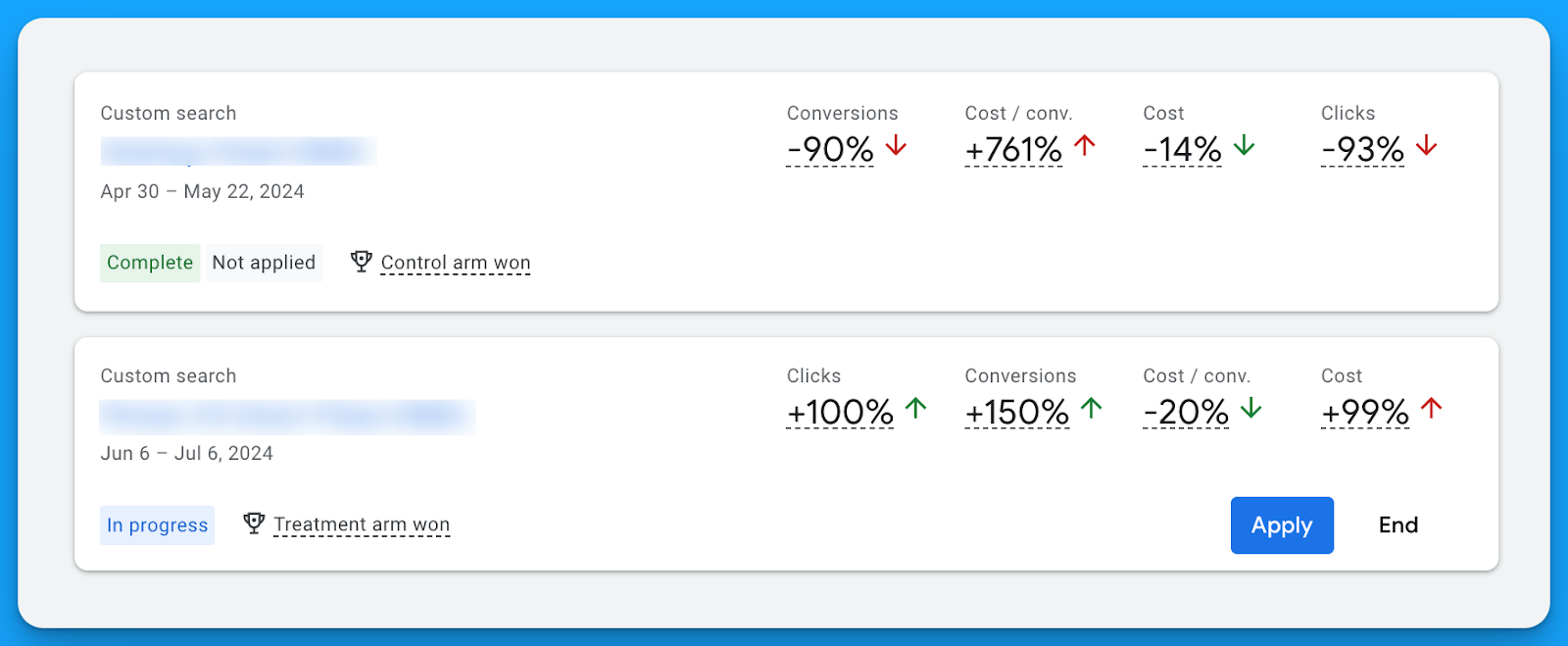
Using this feature build an experiment splitting the traffic by 50% for your original campaign vs the experiment version using broad match AND the targeted audiences you brainstormed in step 2.
Strategy #2: Advertising outside of English
English is the most competitive language in the world with the majority of advertisers.
We’ve seen reductions of up to 70% in our average CPC targeting other languages.
If your company has the resources to sell in multiple languages – take advantage of localization!
Localization campaigns are when you target keywords, write ad copy, and design landing pages that all are in your audience's native language (ex: Spanish, German, Portuguese).
You’ll reap the benefits of lower costs due to less competition.
The downside however with localization is search volume.
If you’re already advertising in English outside of North America and finding success, definitely recommend testing this strategy.
How to implement localized campaigns:
Step 1: Find proven converting phrase match keywords
Review your performance across converting phrase match keywords to identify which you’re going to prioritize testing with broad match discovery.
Don’t rely on “total conversions” make sure you’re viewing performance by keyword based on the custom metrics that matter for your business (ex: Demo, Trial, SQL, SAL, Opp, etc).

Step 2: Brainstorm your targeted languages
Ask your internal team what languages your sales team is able to sell in.
Based on your options make a list of potential languages.
Next, if you’re advertising outside of North America, review the top performing countries and identify their local languages and see if you have the internal resources that can speak that language.
If you can’t sell in this language then this strategy won’t make sense.
Step 3: Hire a local translator
Don’t make the mistake of relying on Google Translate to perform the bulk of your translation.
You’ll want to hire a translator that grew up in the area in which you want to advertise.
For instance, if you’re advertising in Portuguese.
The dialect for Europeans living in Portugal and those living in Brazil is very different.
A local brazilian can tell if it’s not their dialect just like a native portuguese.
I recommend hiring locals off Upwork can be as low as $12/hour depending on the language.
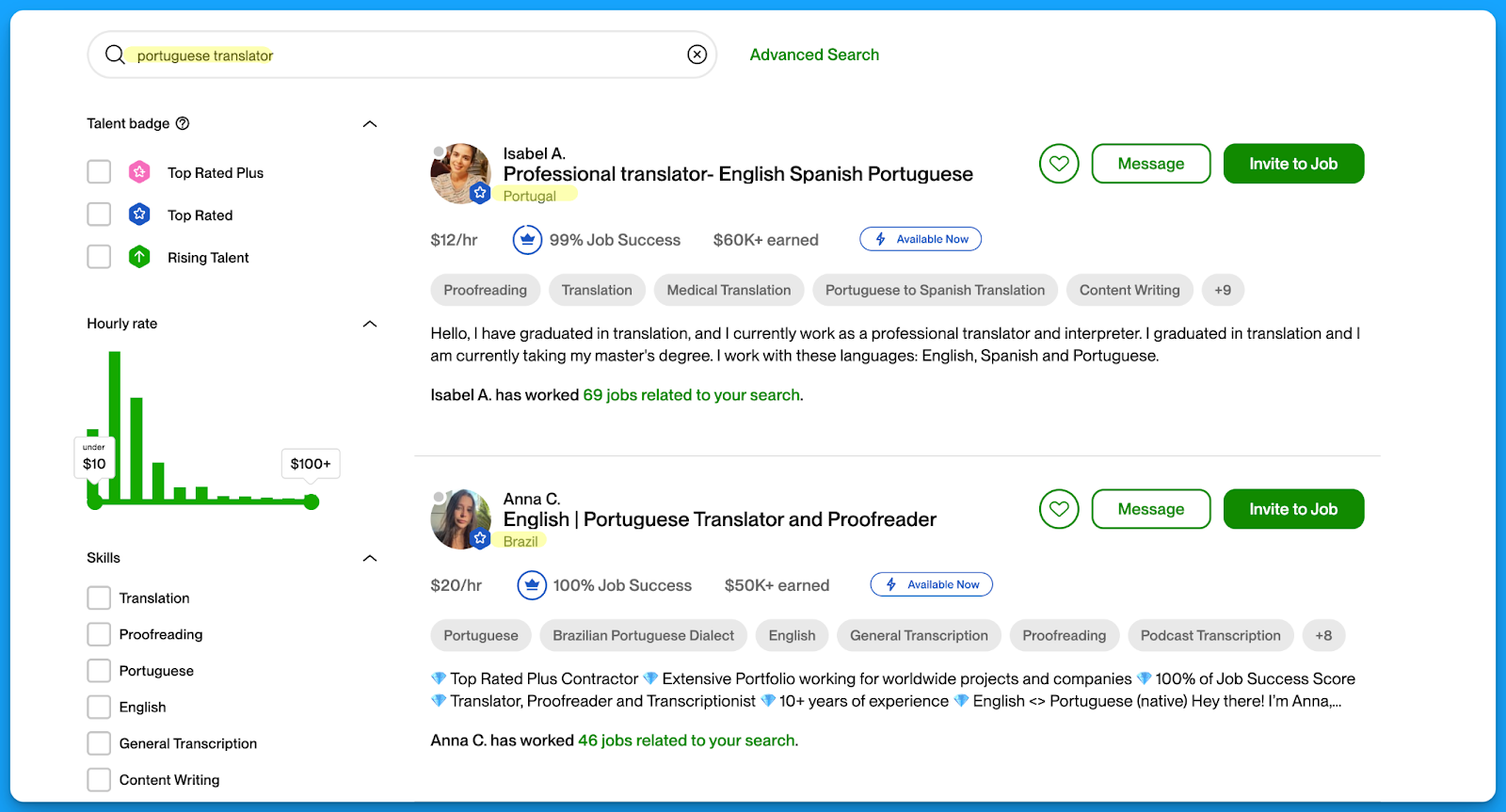
These translations will make a world difference in your ad and landing page copy.
Strategy #3: Industry campaigns
Industry campaigns can be great for coverage and quality.
This is where you’re going to bid on a desired keyword and add a related industry term.
For example, let’s say bidding on the keyword “crm software” here’s how you can modify this keyword to make it industry specific:
- healthcare crm software
- crm software for fintech
- crm software for small businesses
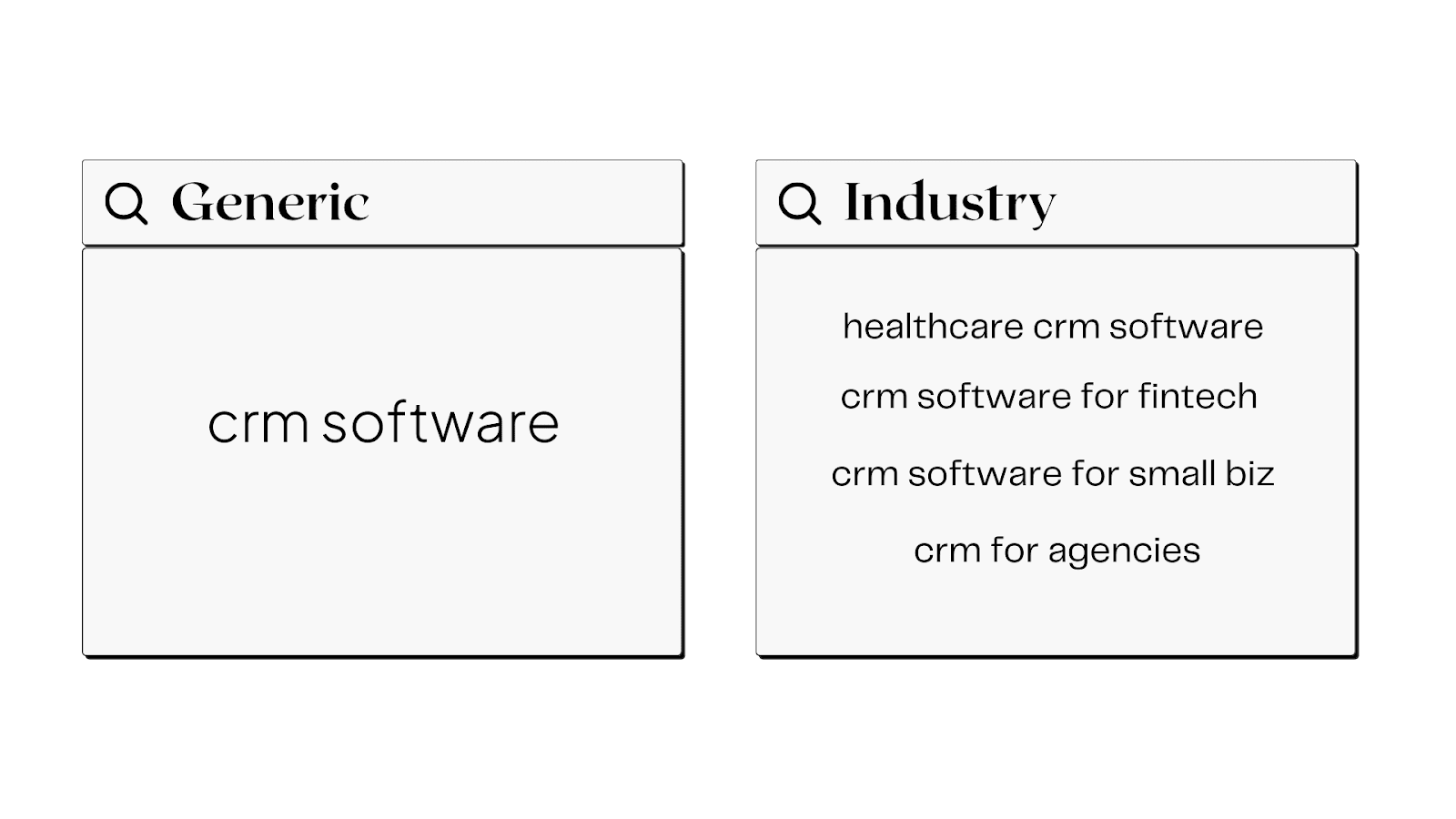
The benefits of industry campaigns:
- Personalized ad copy that can yield greater CTRs
- Higher quality leads due to a more qualified search term
- Lower cost per click prices due to less competition
The downside however is search volume (the constant struggle of Google for SaaS 😅).
How to implement industry campaigns:
Step 1: Find proven converting phrase match keywords
Just like the other strategies we’re going to identify proven keywords first that we can create industry variations for.
Step 2: Brainstorm your target industries
Run a win rate analysis in your CRM and understand which industries have the shortest sales cycles and largest deal sizes? Based on your findings, prioritise the industries in which you want to target.
Step 3: Build and prevent keyword overlap
Once you have your keywords and target industries you’re ready to build your campaigns.
Make sure to add your industry terms as negative keywords in your generic non-brand campaigns.
Otherwise you can have people seeing your generic ads for your industry terms.
Hope you found this article helpful!
Best of luck scaling your Google Ads campaigns for your SaaS.
Resources for mastering B2B advertising
If you’re serious about mastering B2B advertising then you definitely need to join 1,000+ B2B marketers leveling up their paid advertising skill sets in AdConversion.
Here’s 4 reasons why you should consider joining. Every one of our on-demand courses are:
✅ 100% free access.
✅ Taught by vetted industry experts.
✅ Have workbooks, resources, and templates.
✅ Less than 10 minutes per lesson.
We believe every marketer should know how to scale paid ads so they can:
- Scale their ideas
- Level up their careers
- Make a positive impact
Click Here to Join 1,000+ B2B Marketers Today and start leveling up your advertising skill set.
Takes < 90 seconds to sign up (seriously we timed it 😂)







%20-%20new%20v2.png)










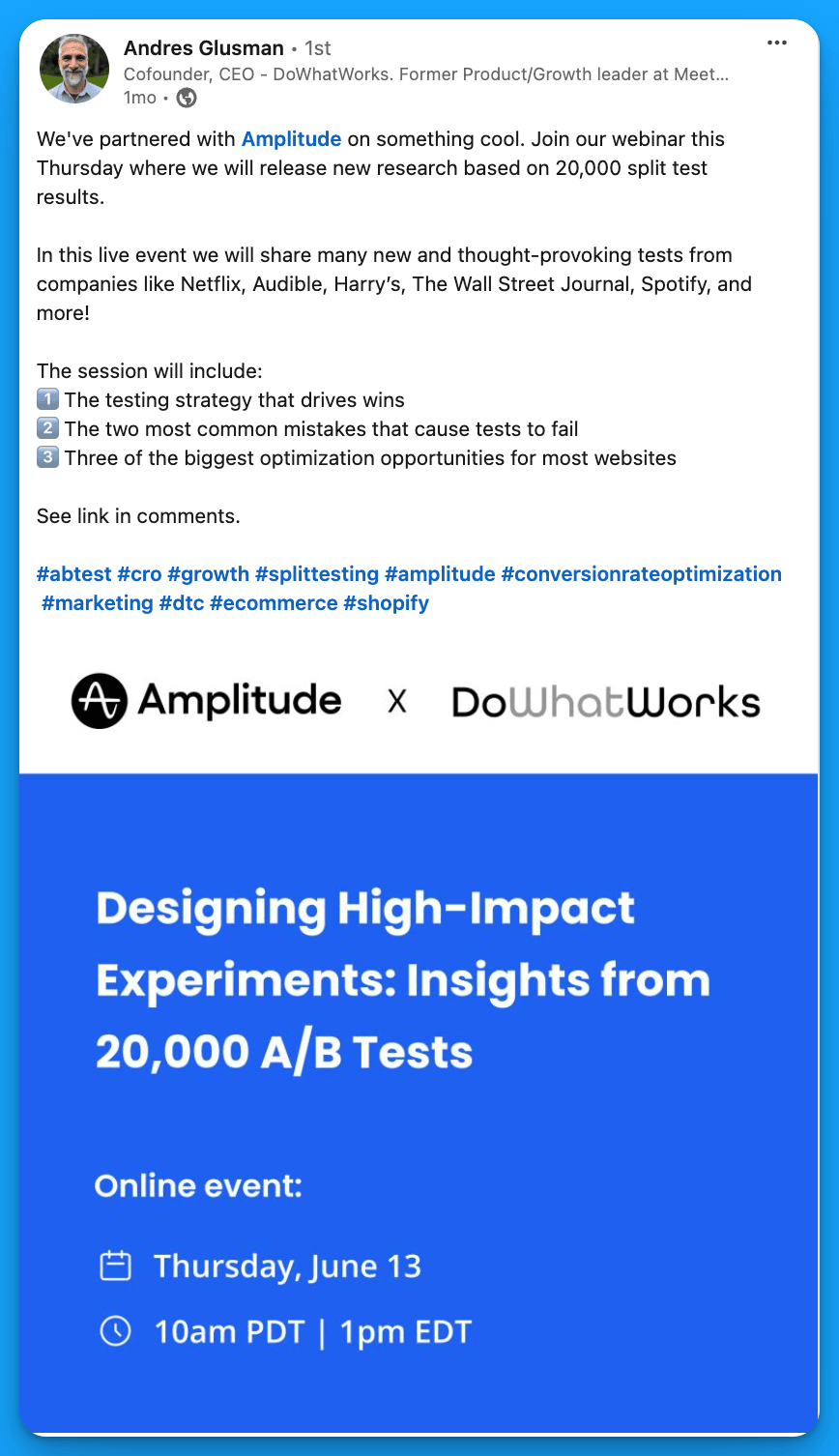
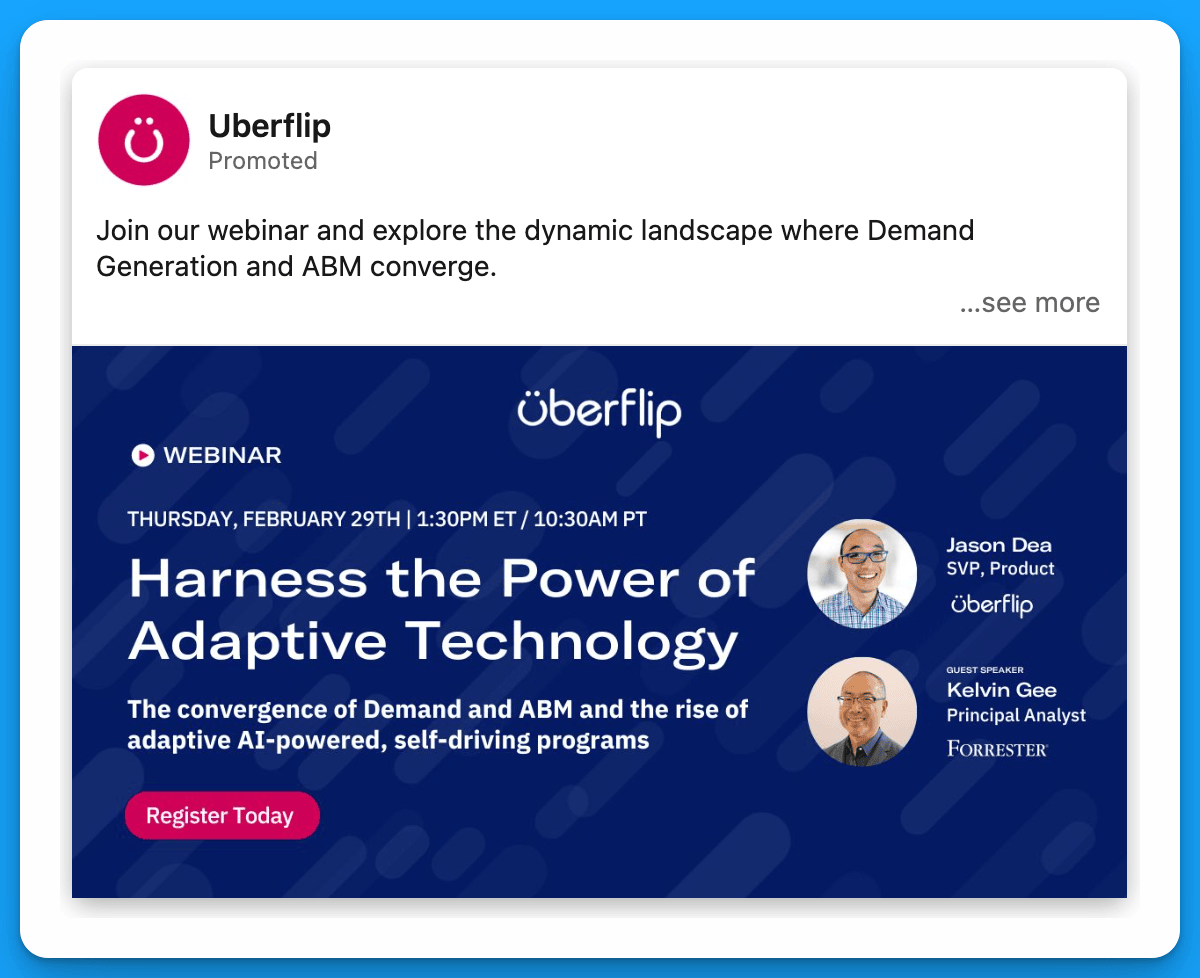


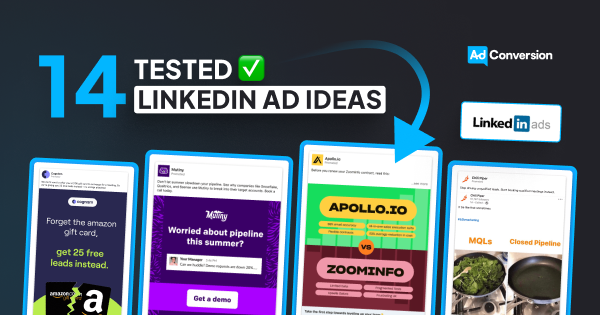
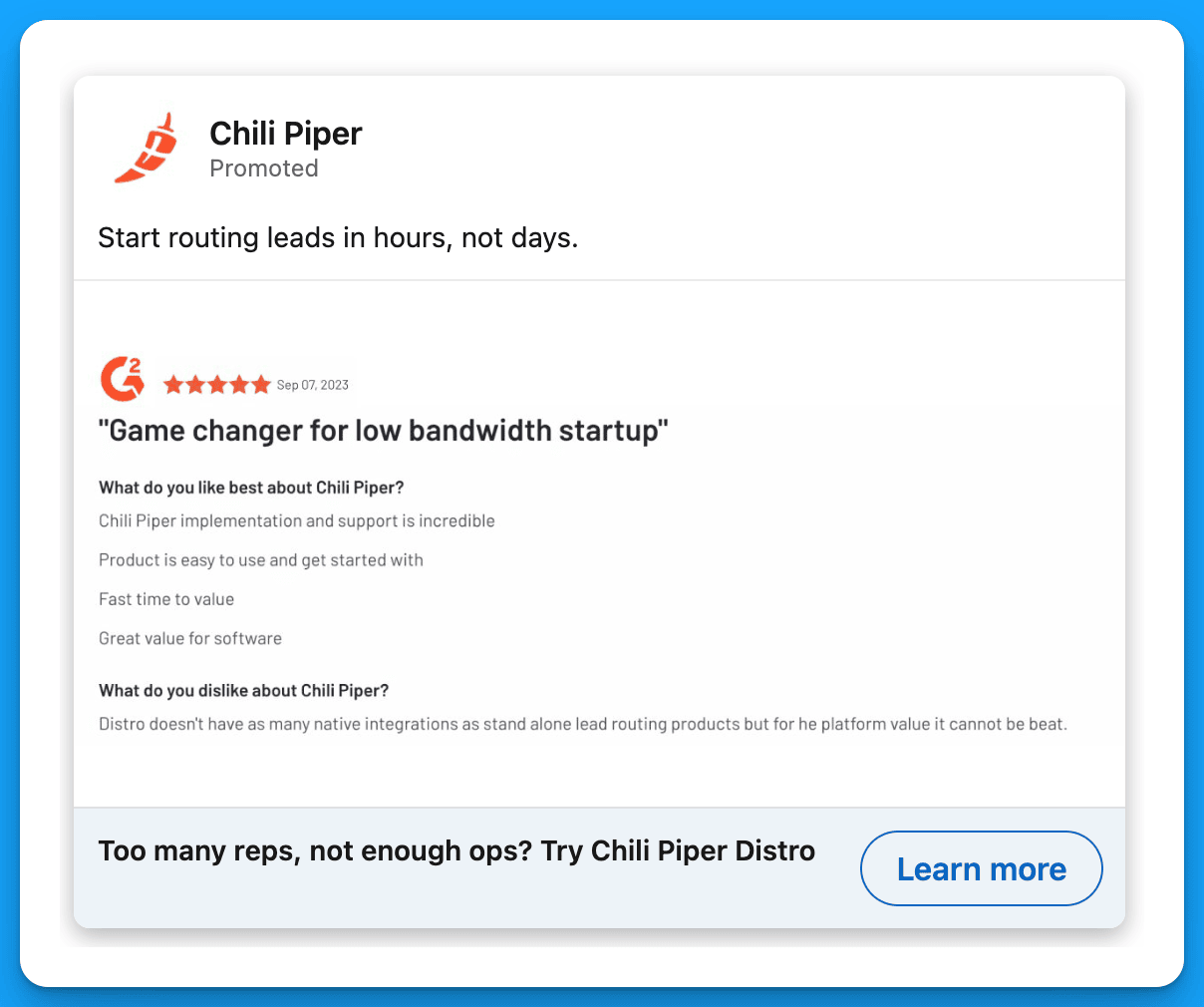
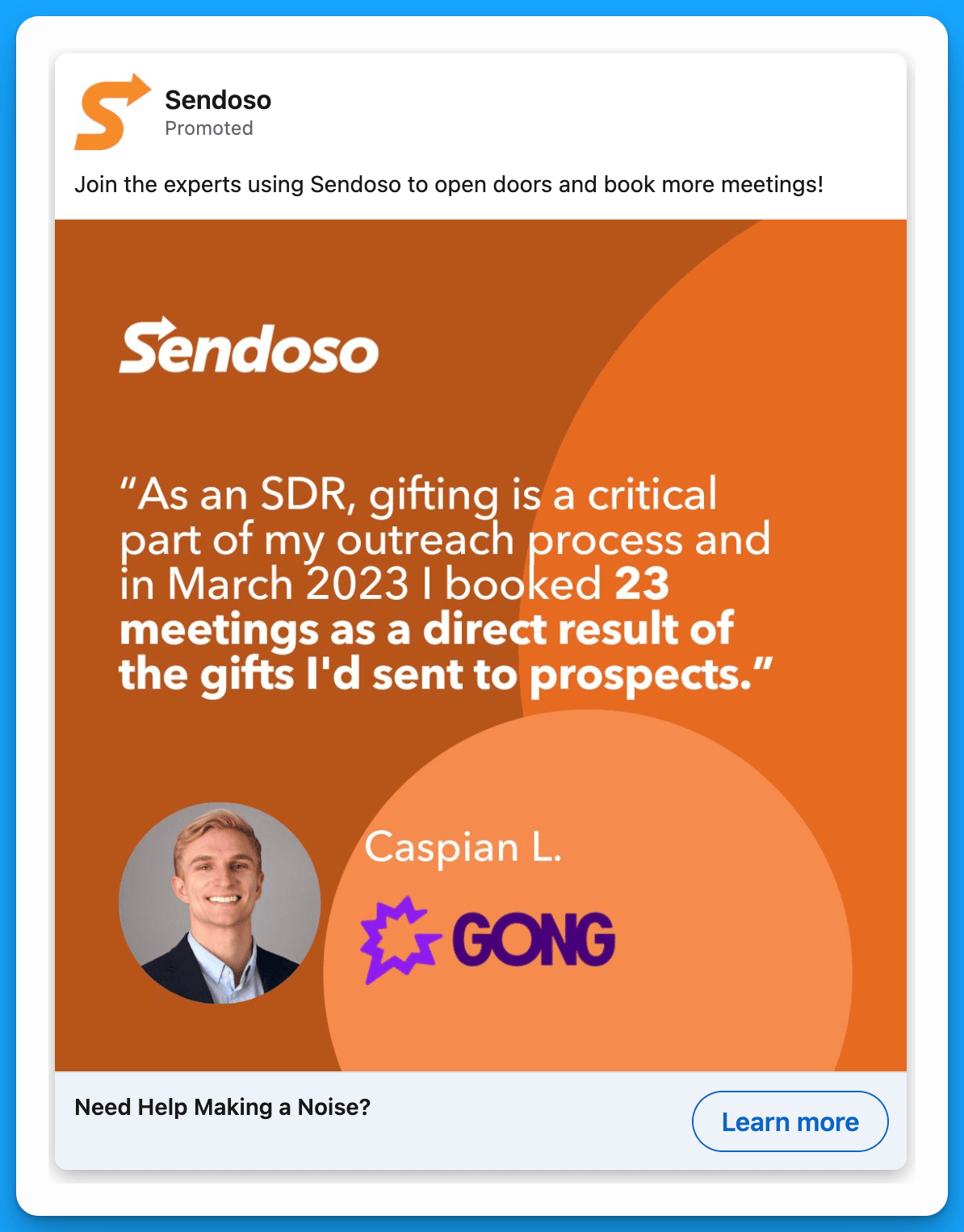
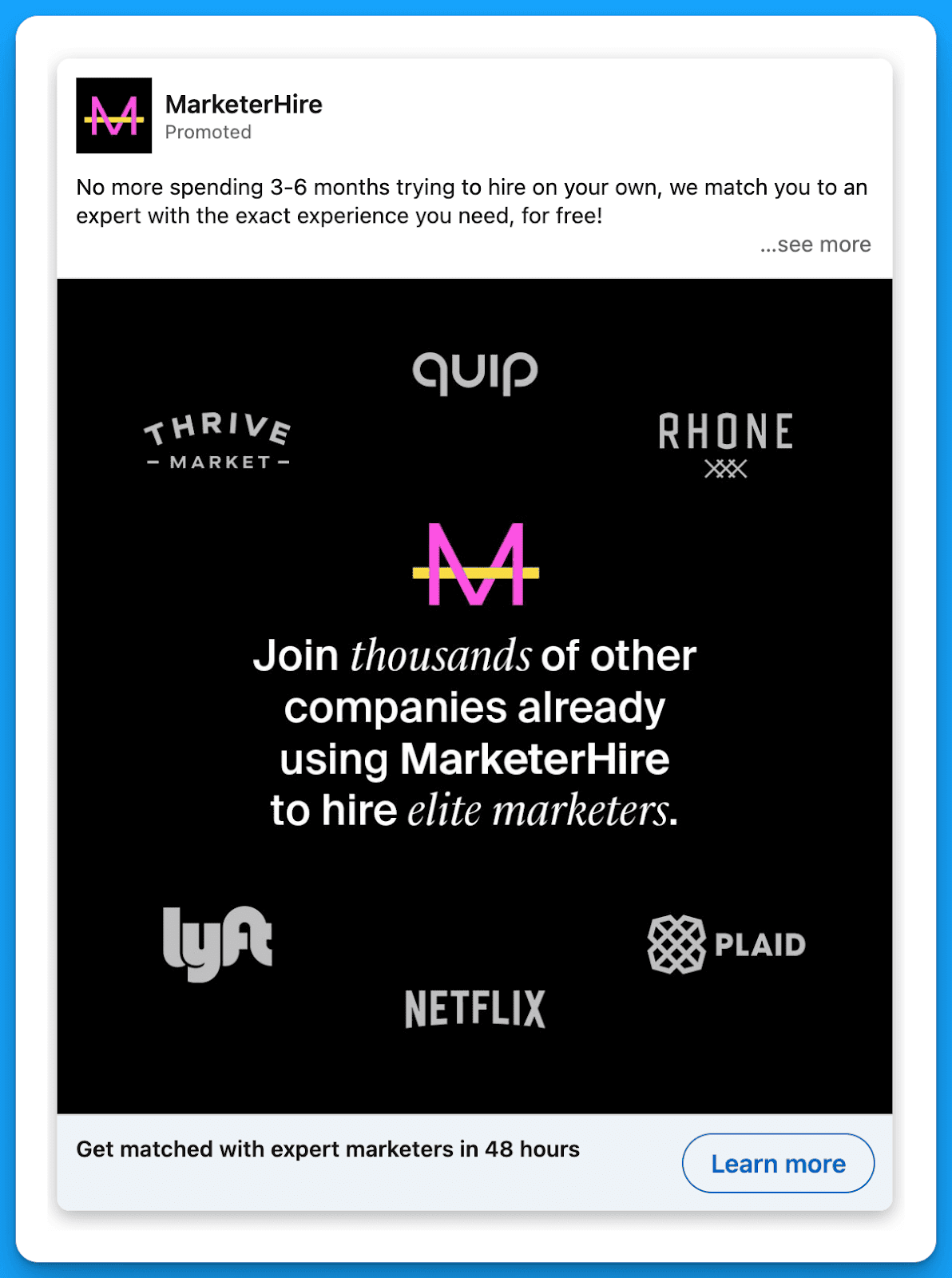
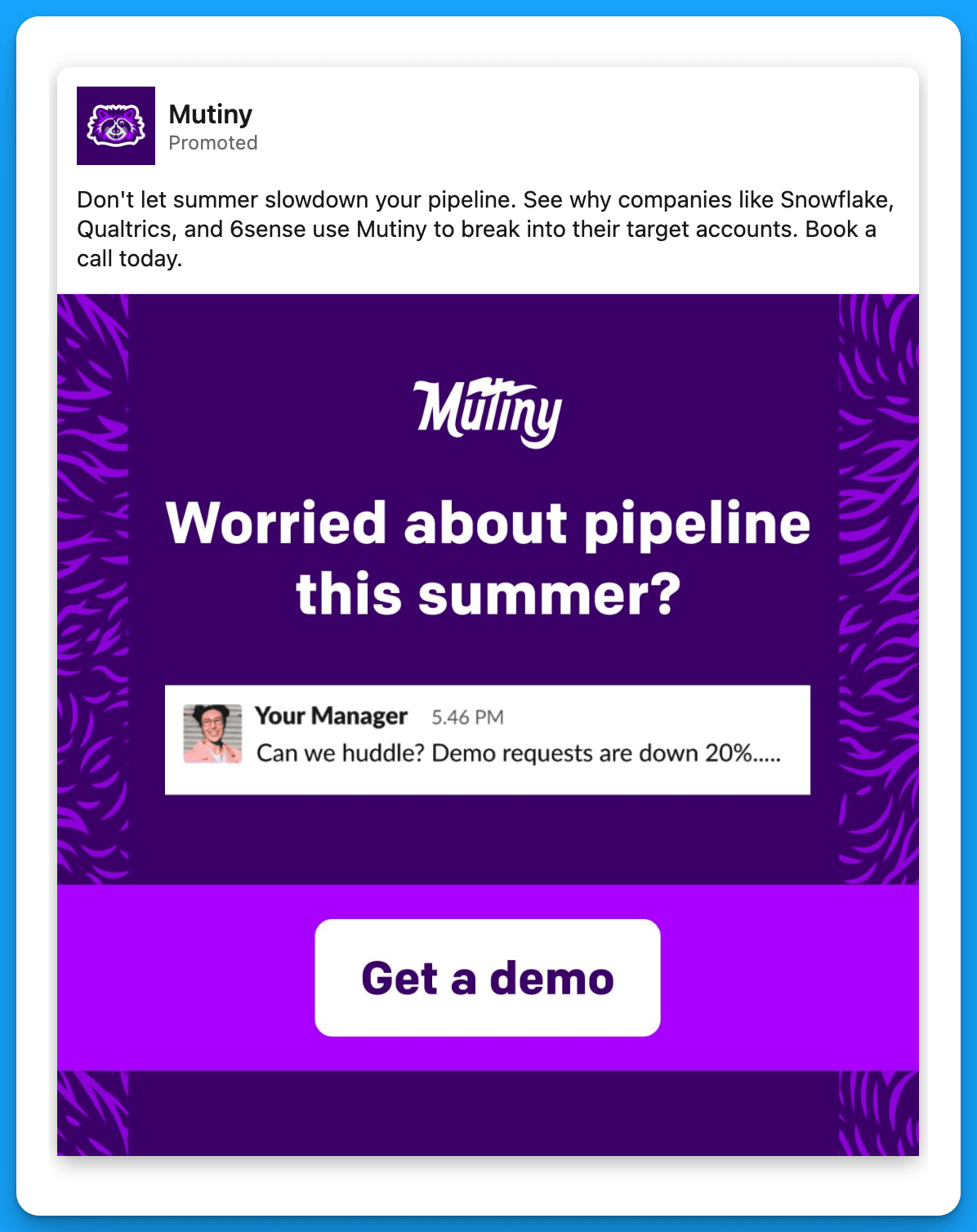
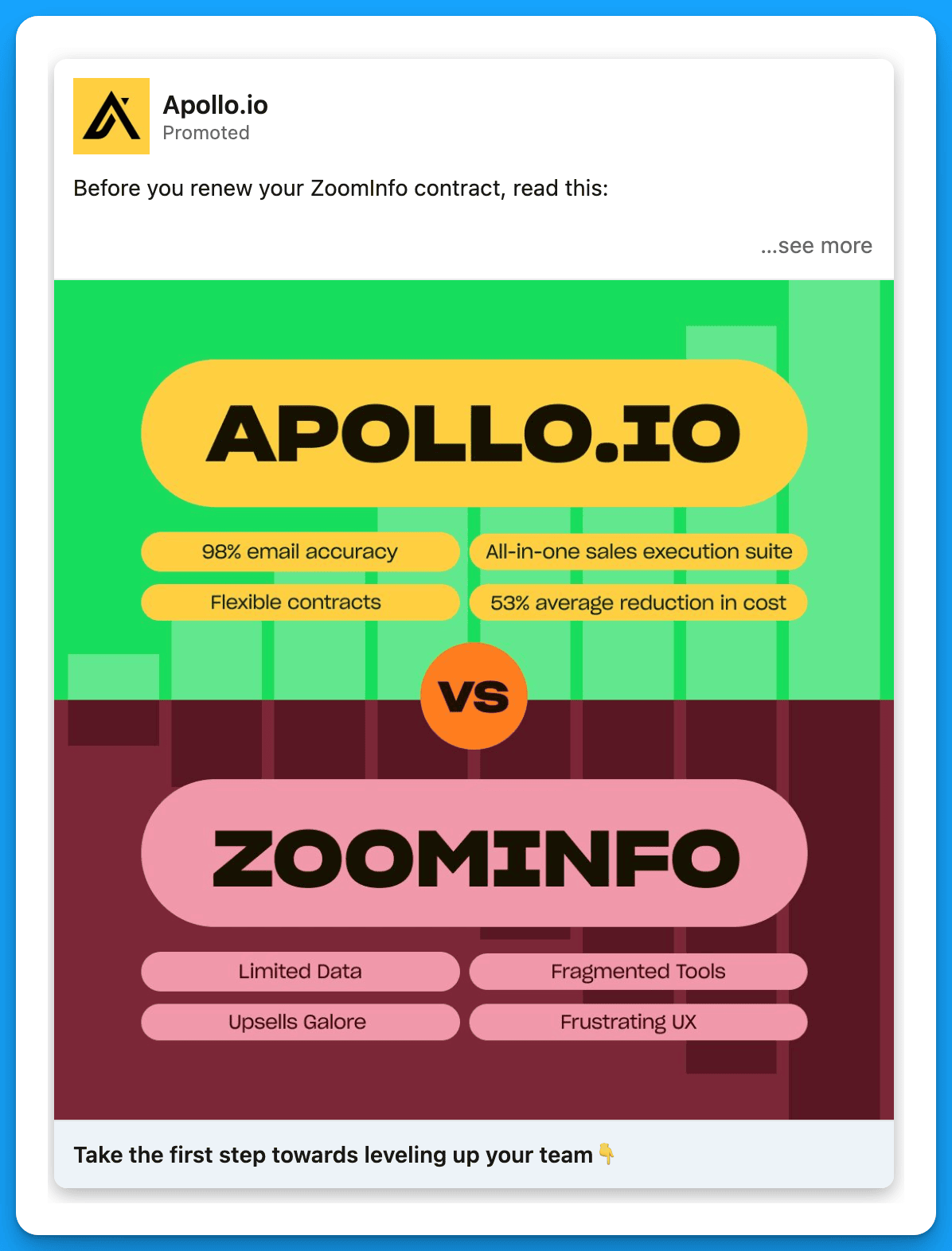


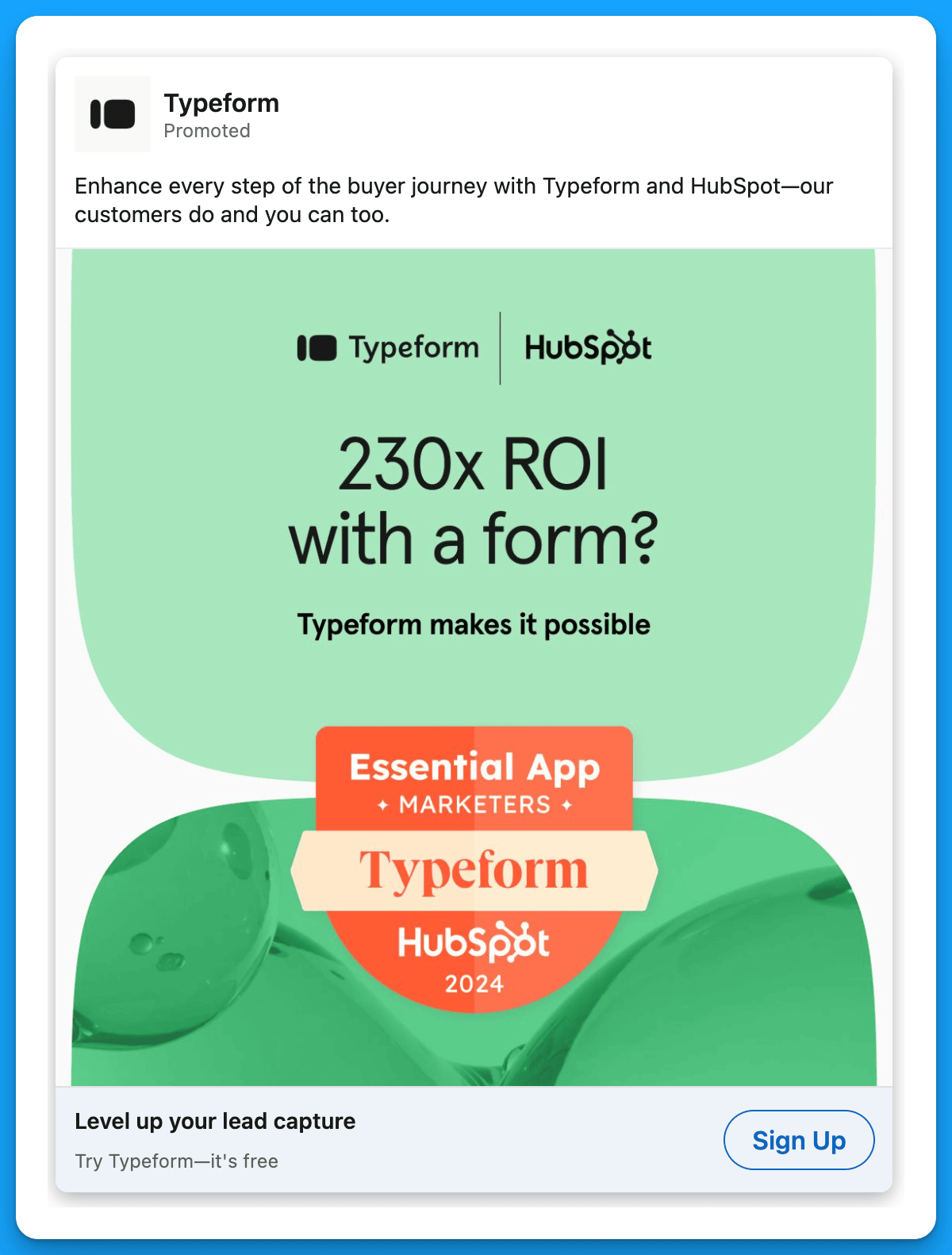
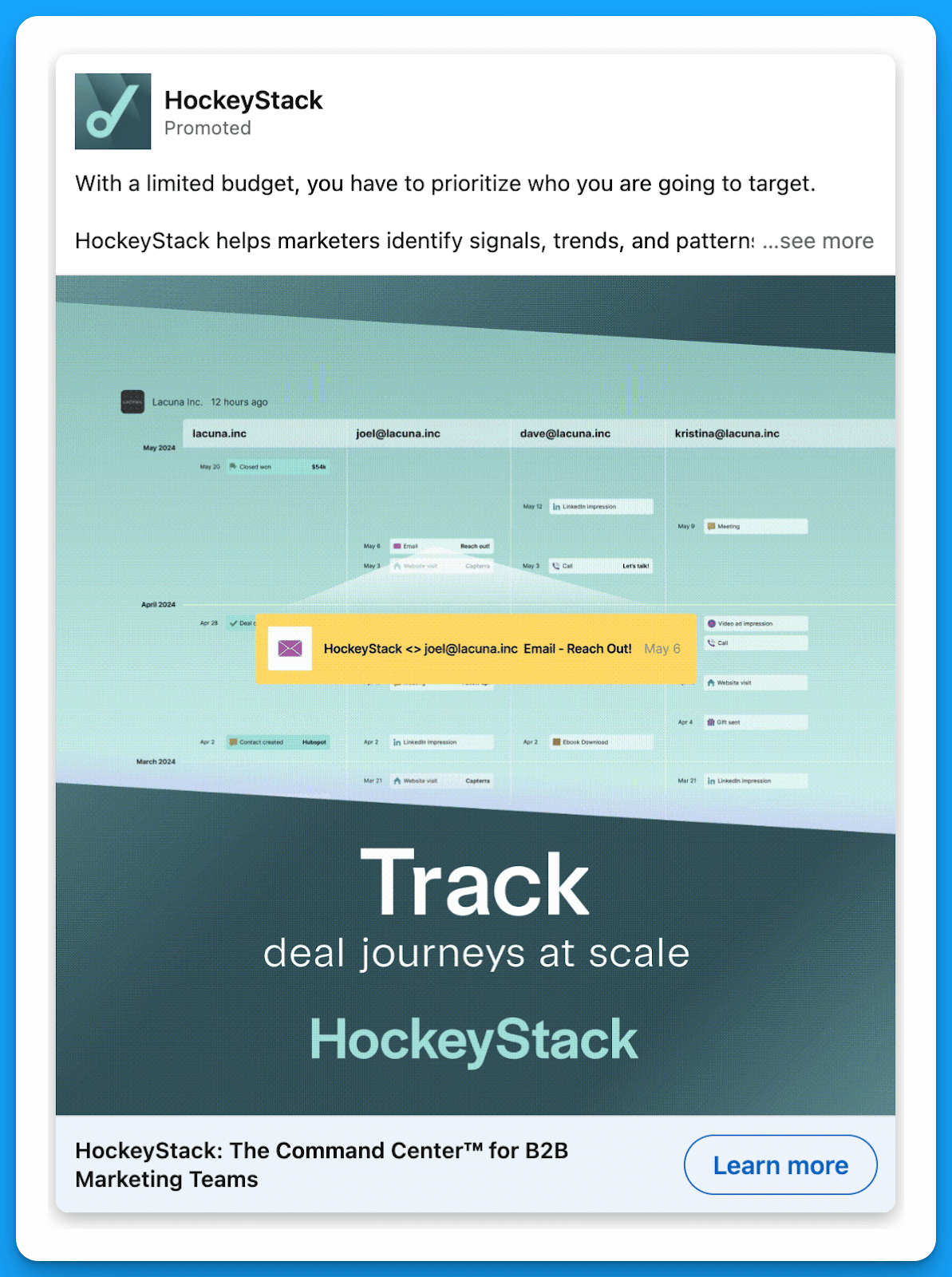
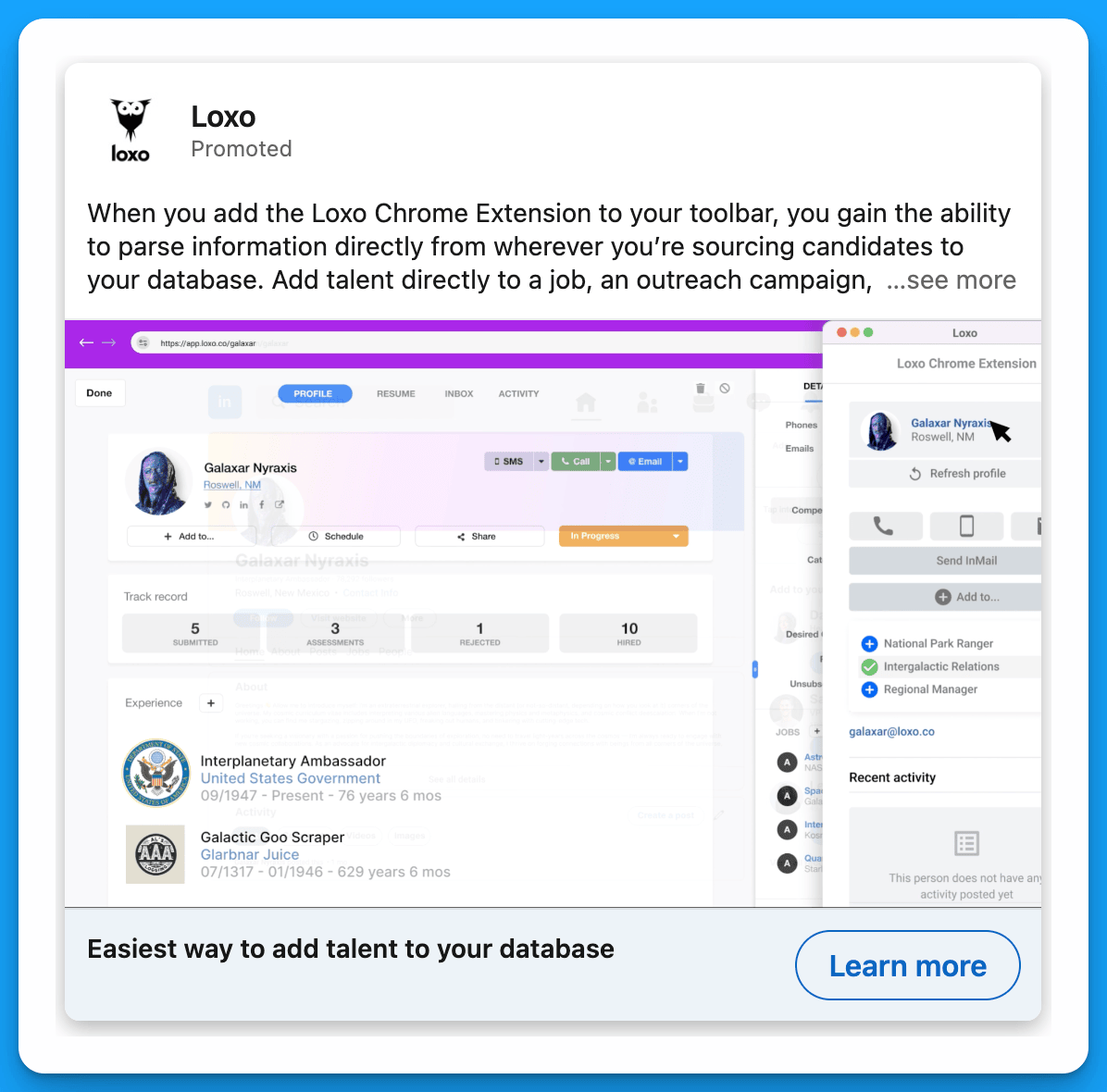



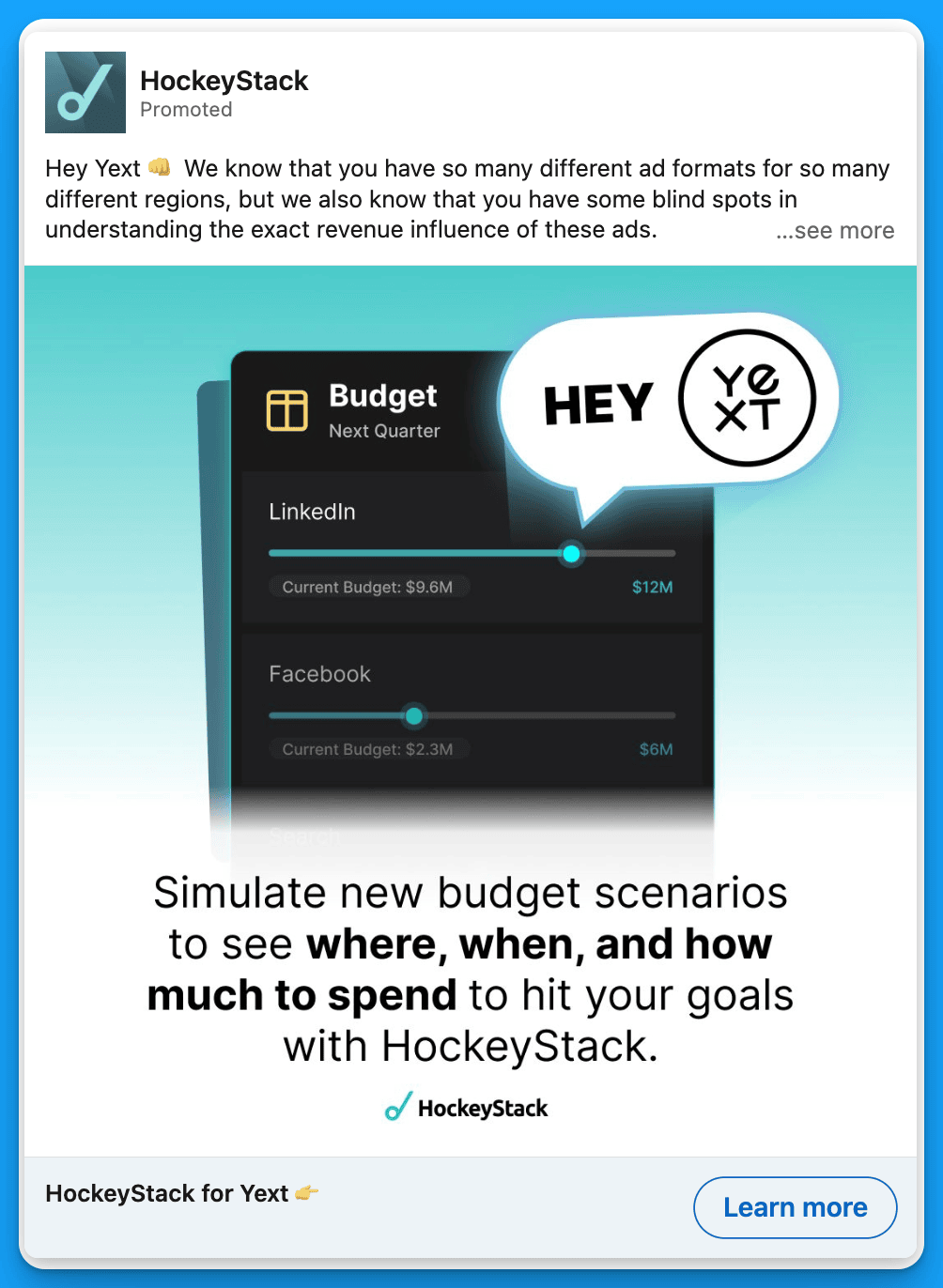

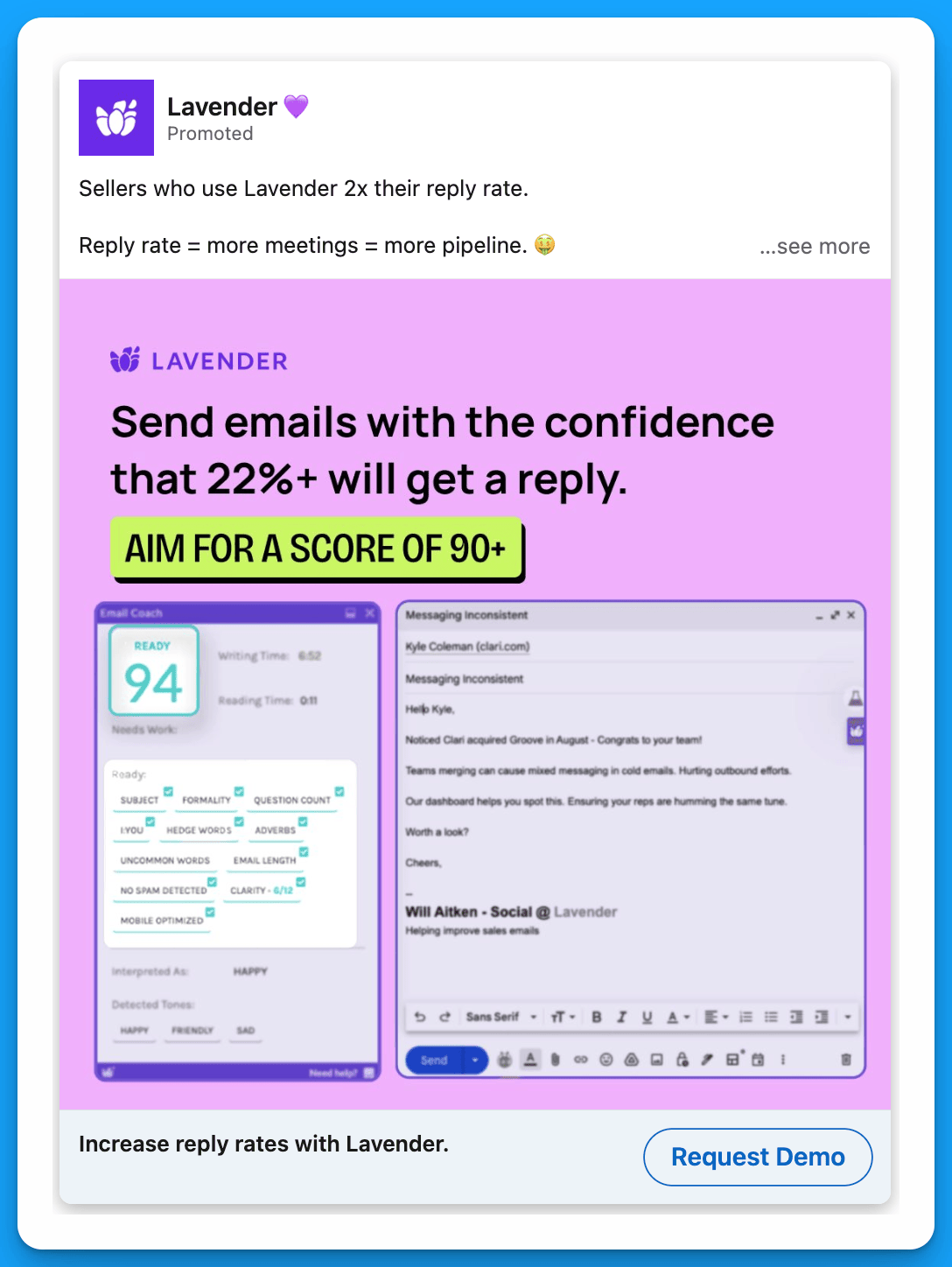
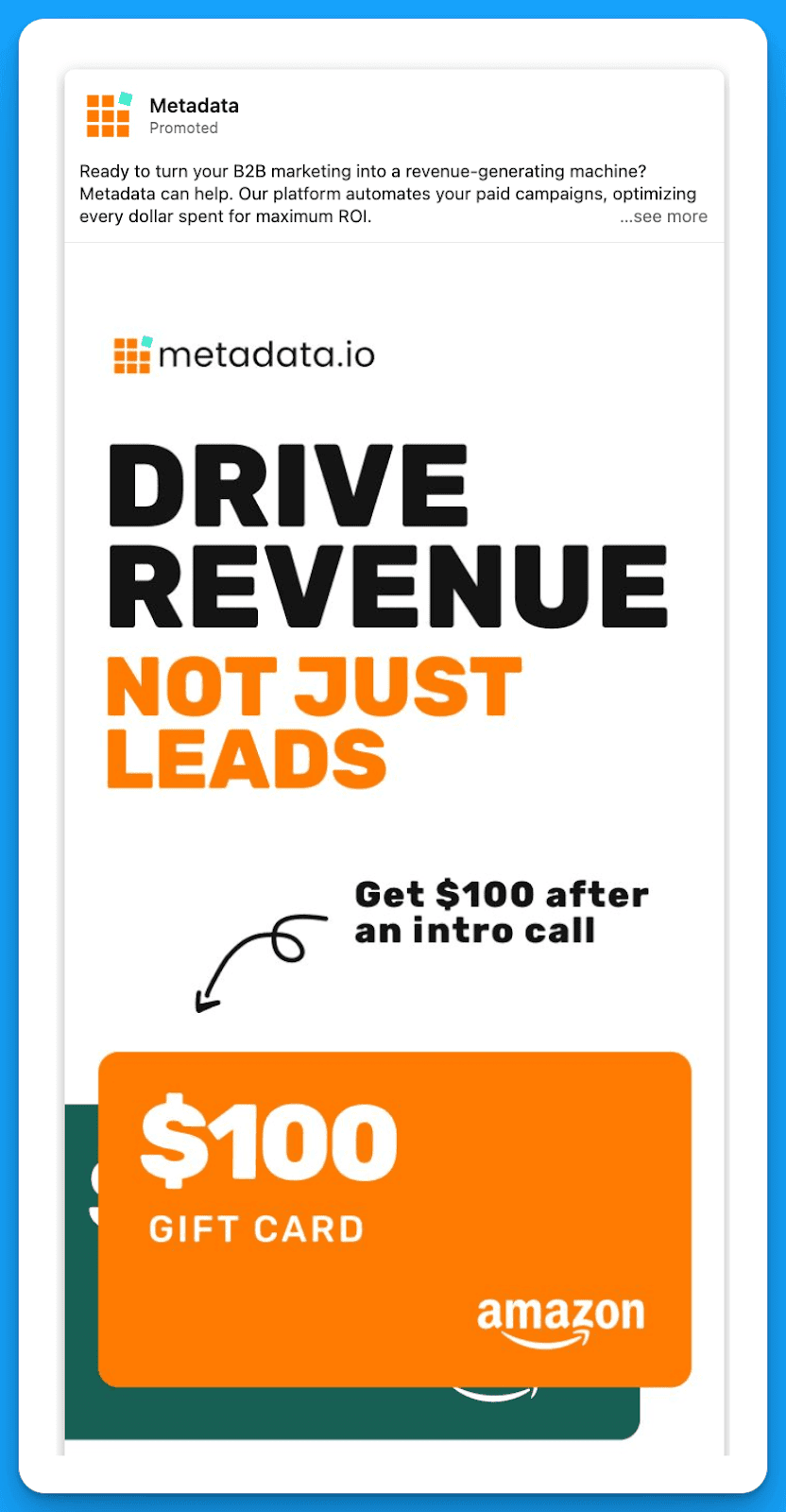

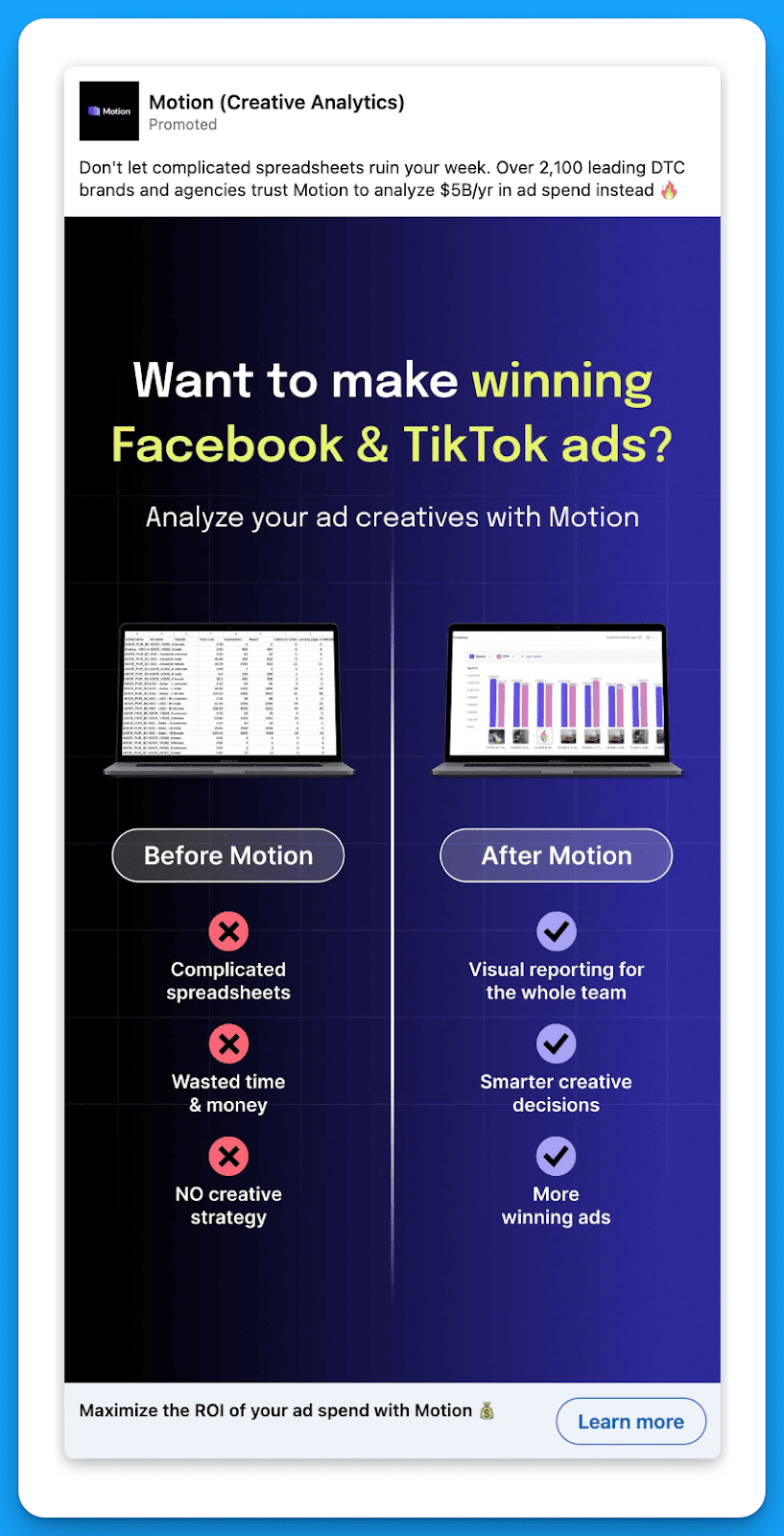
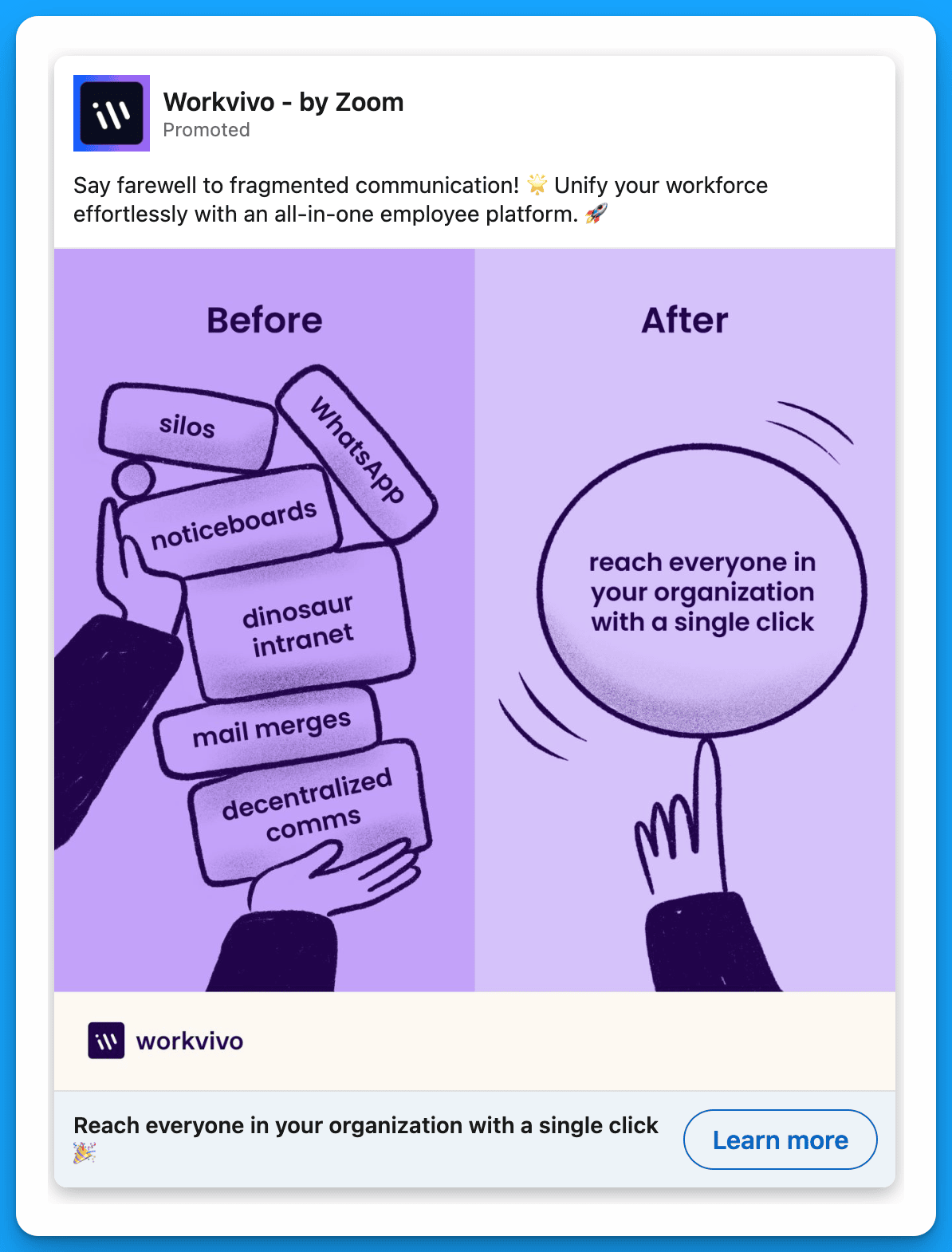
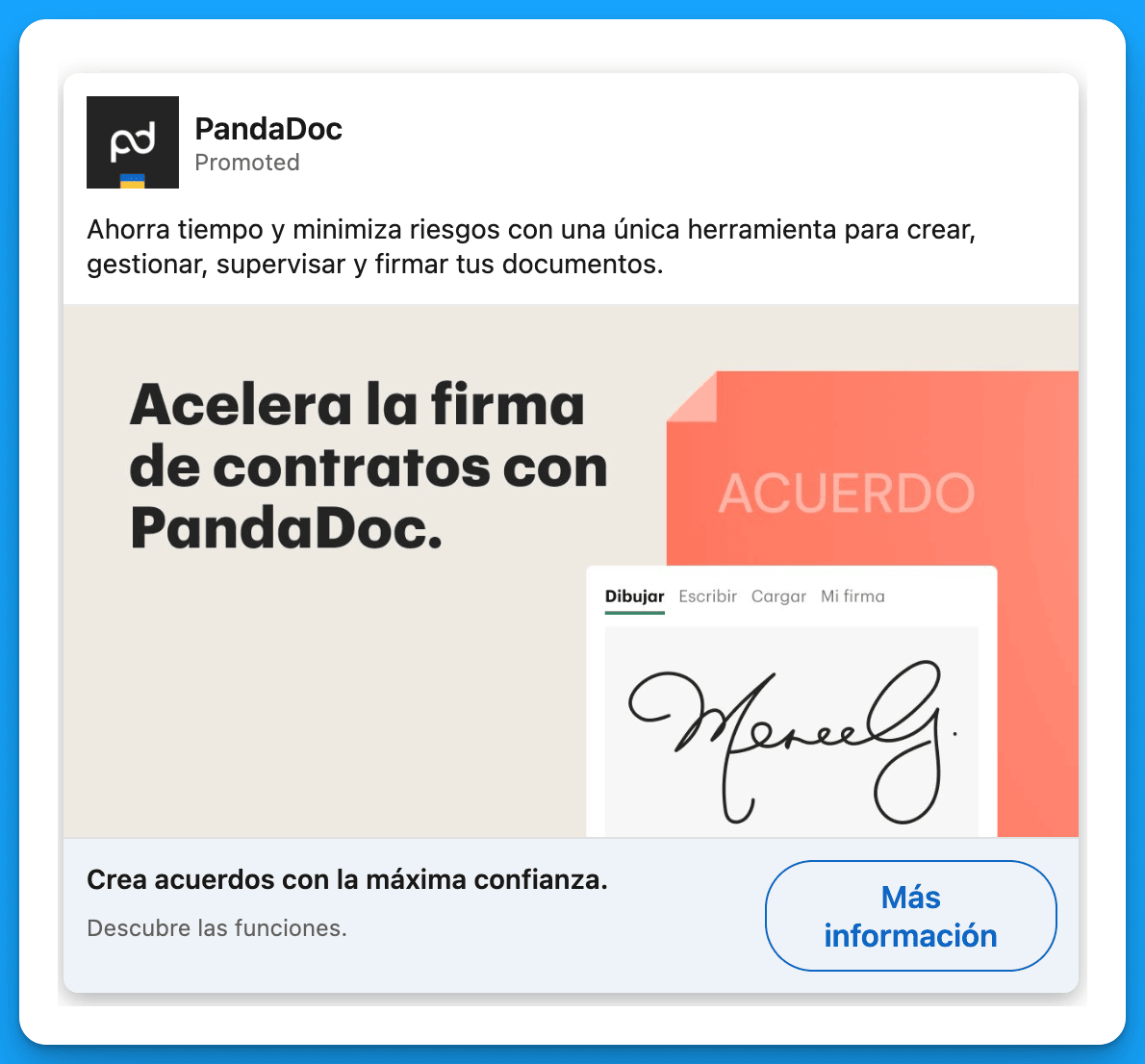

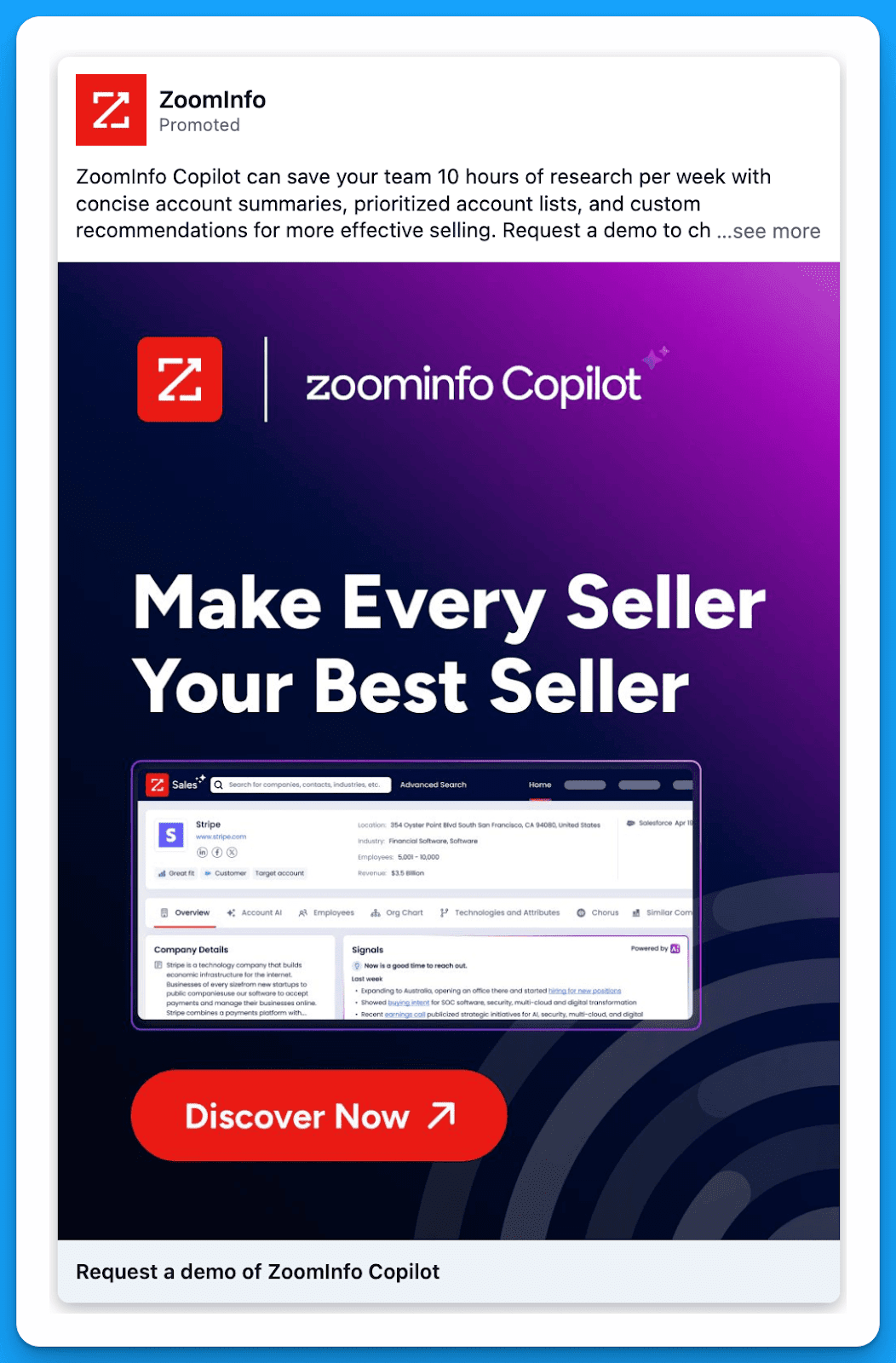
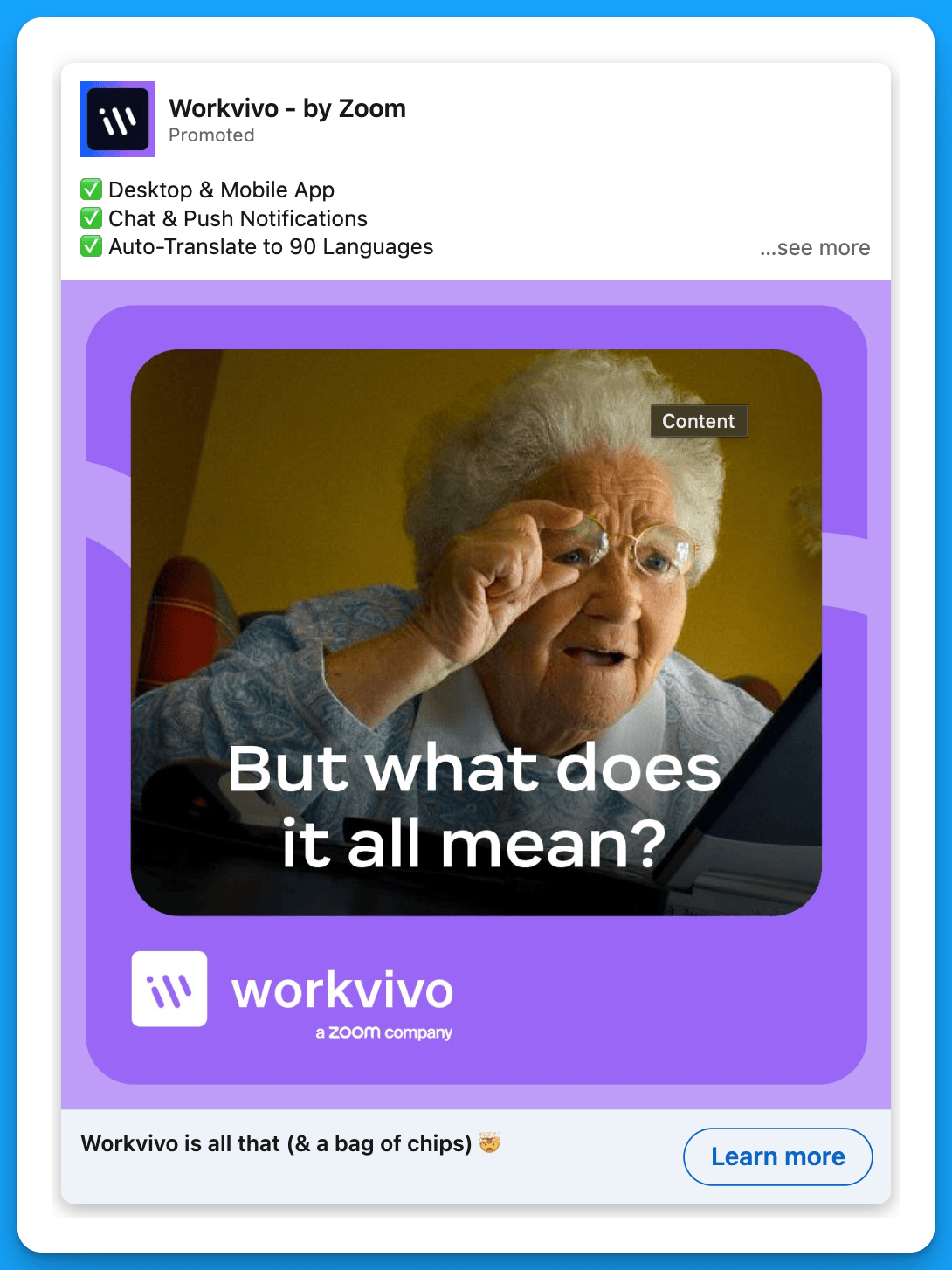
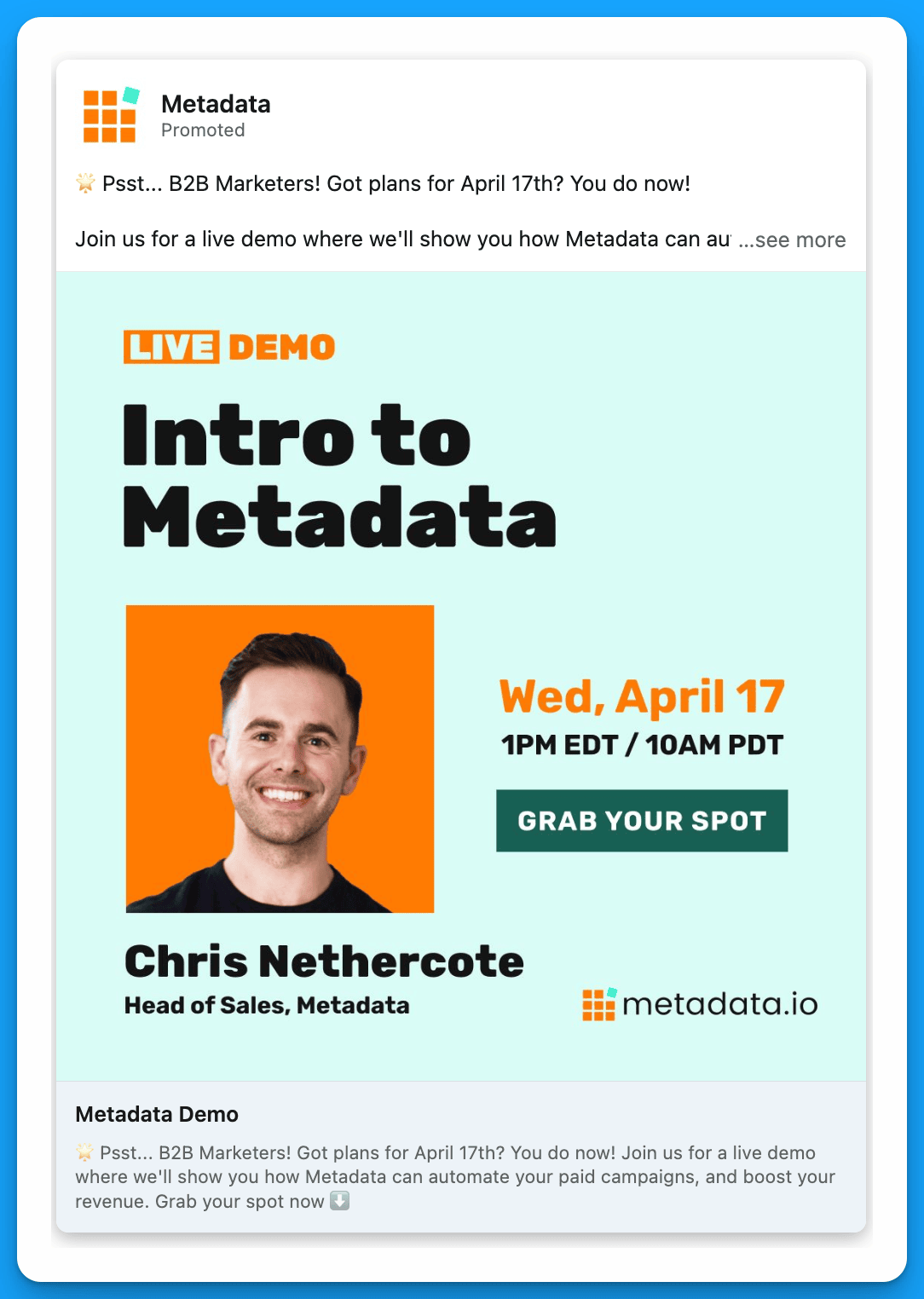
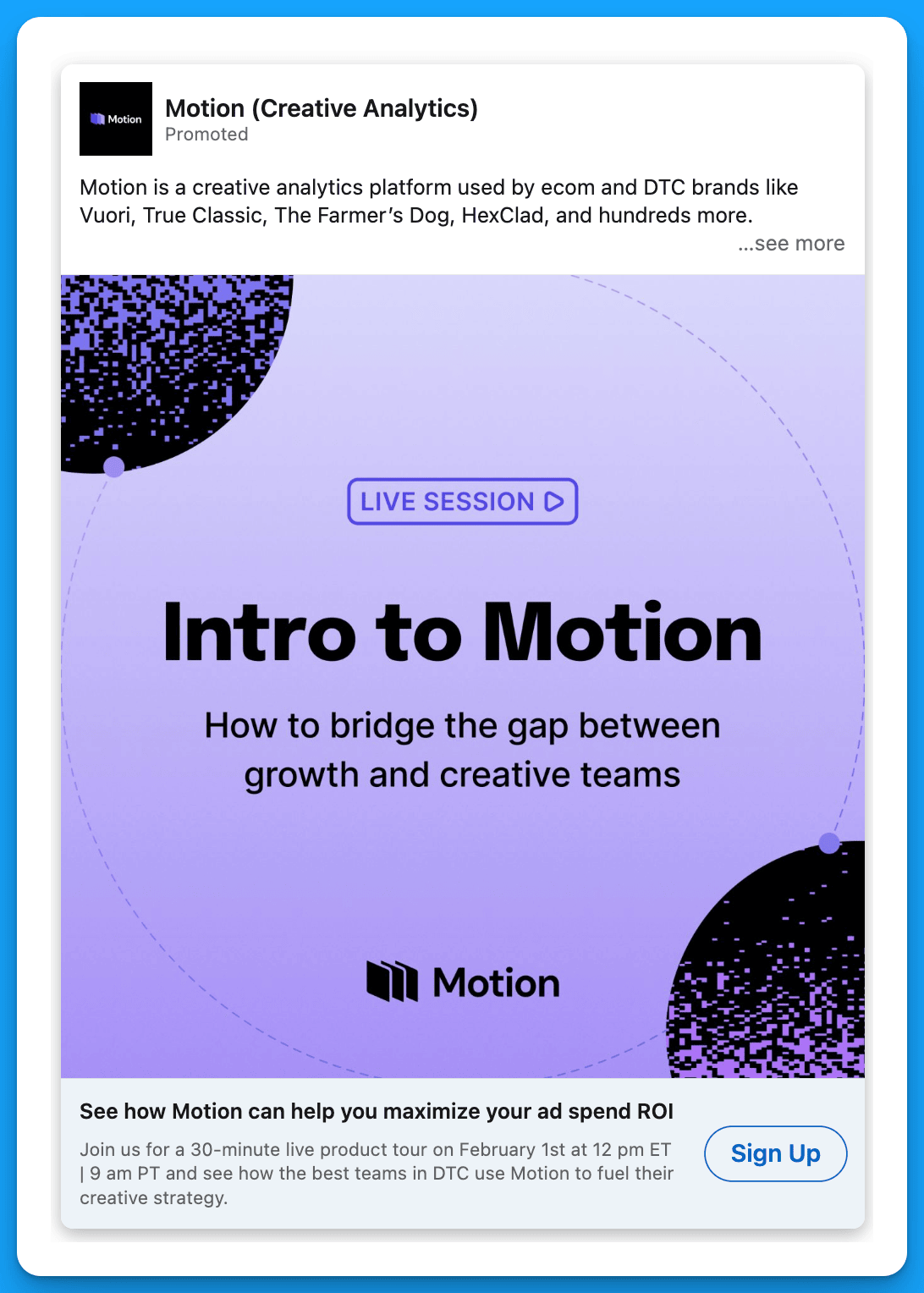





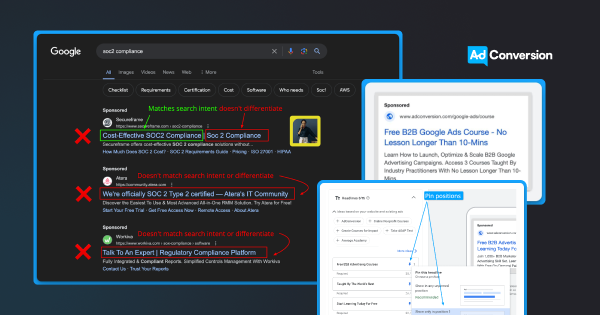
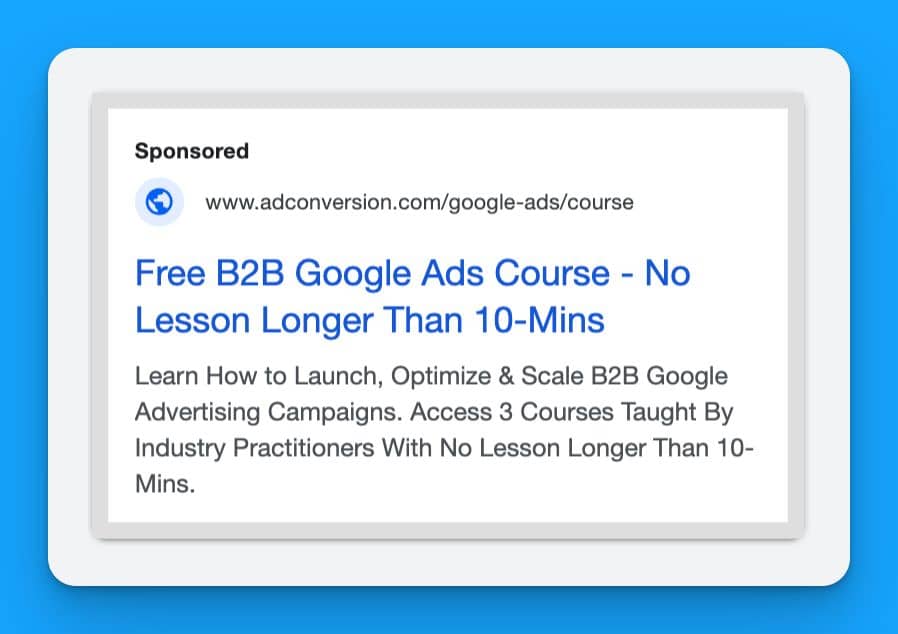

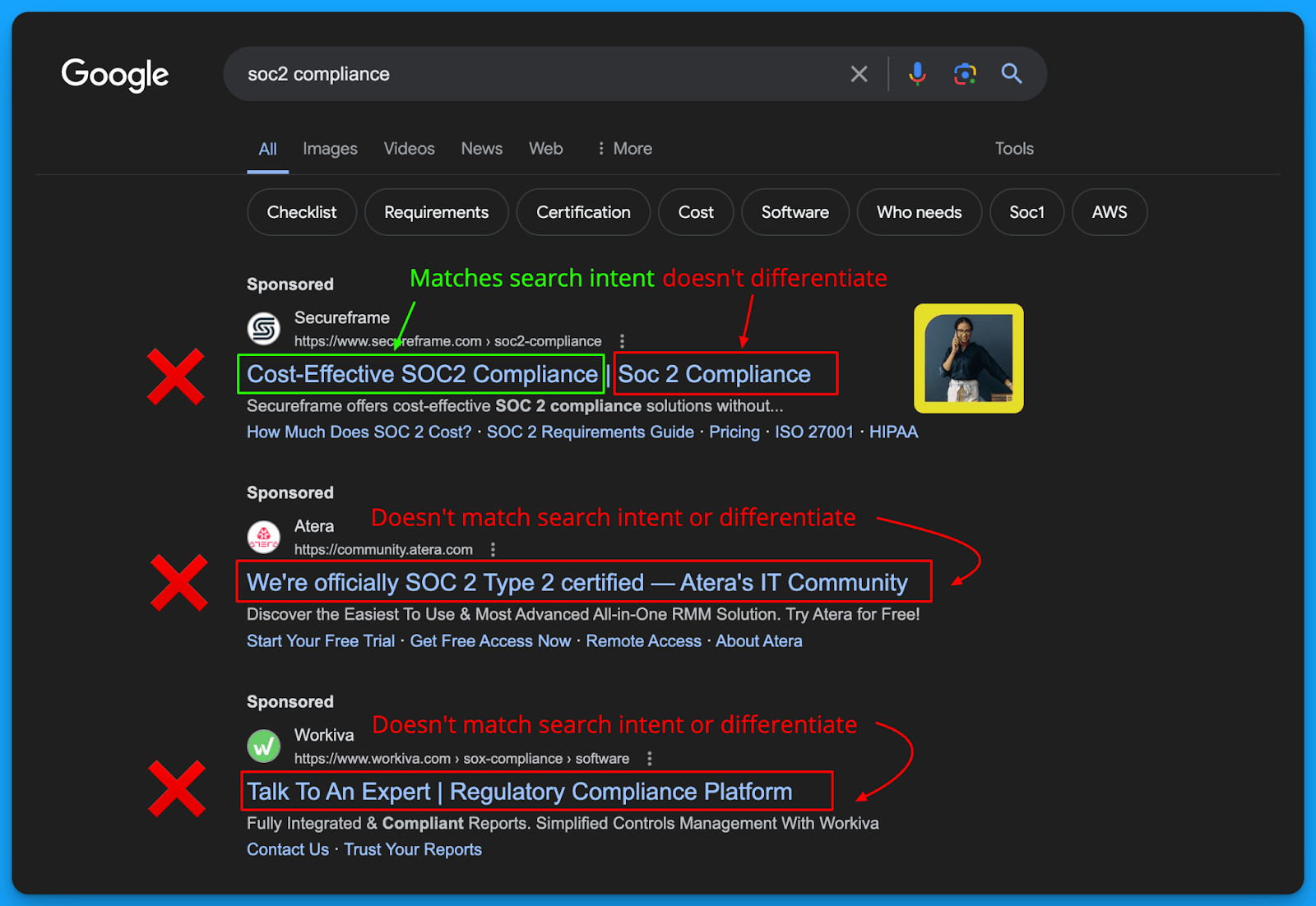
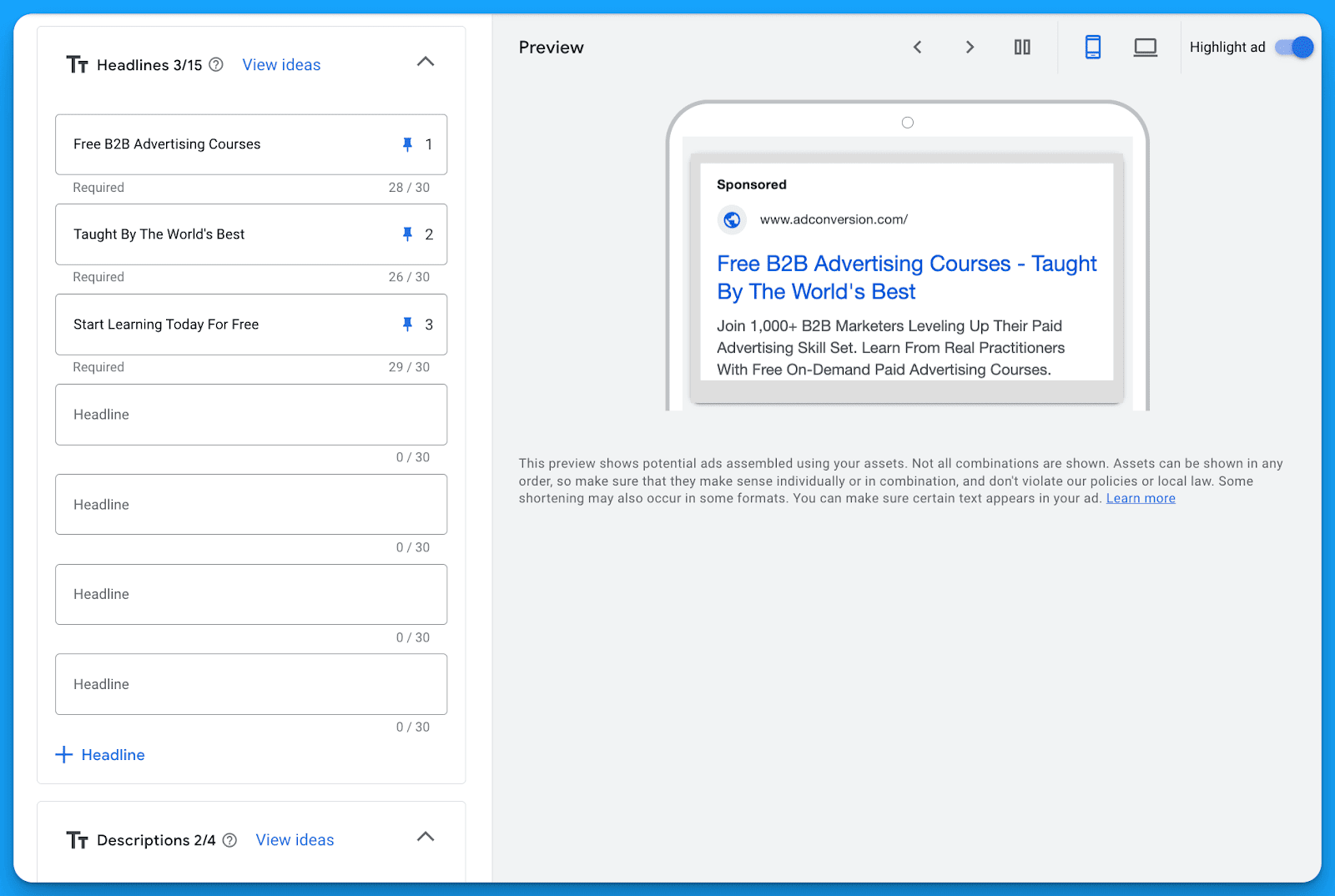
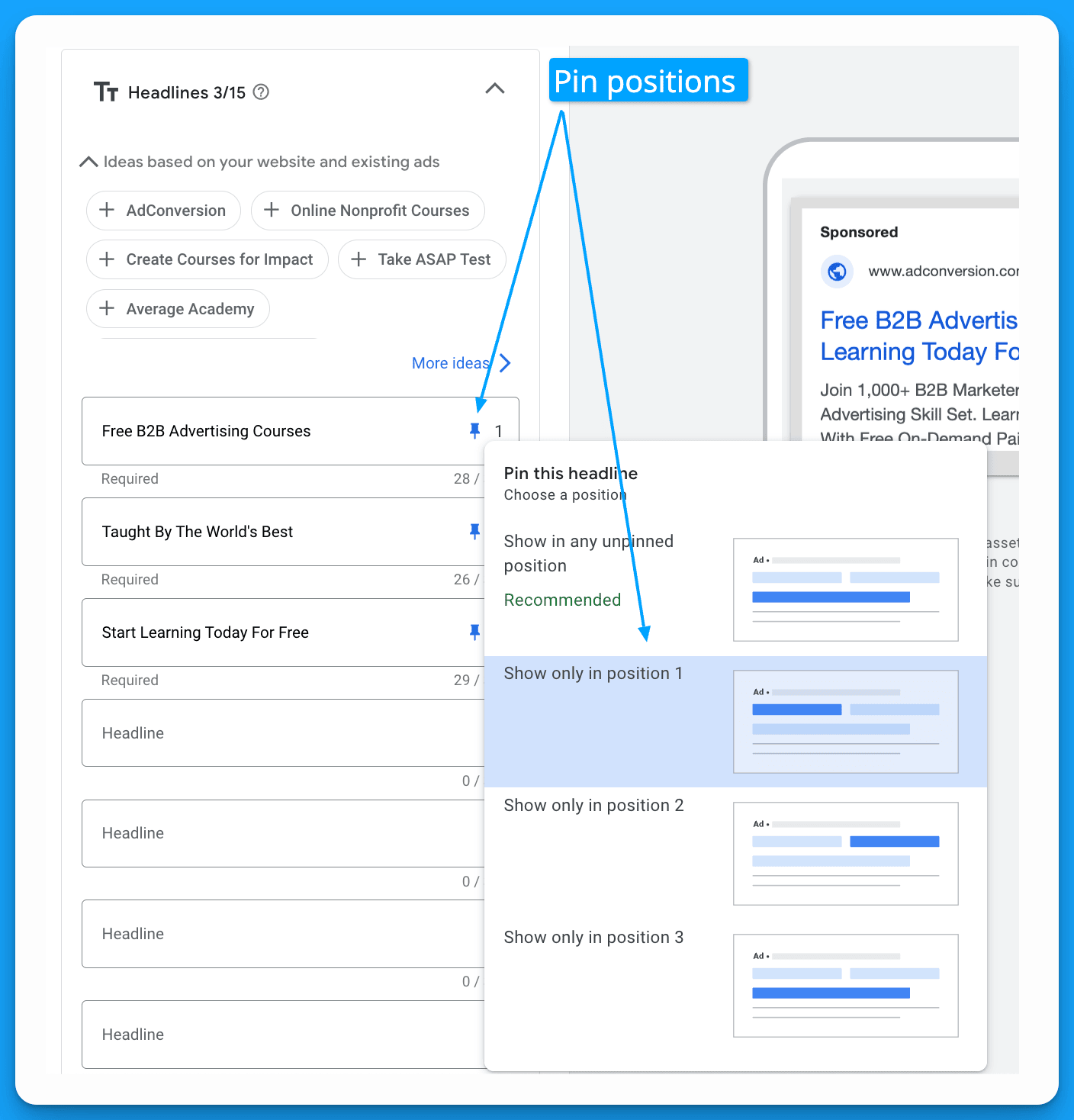







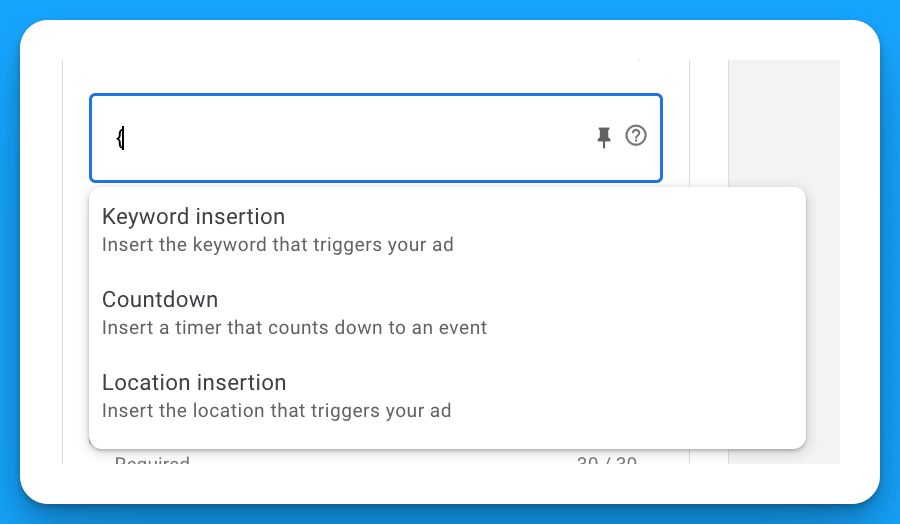


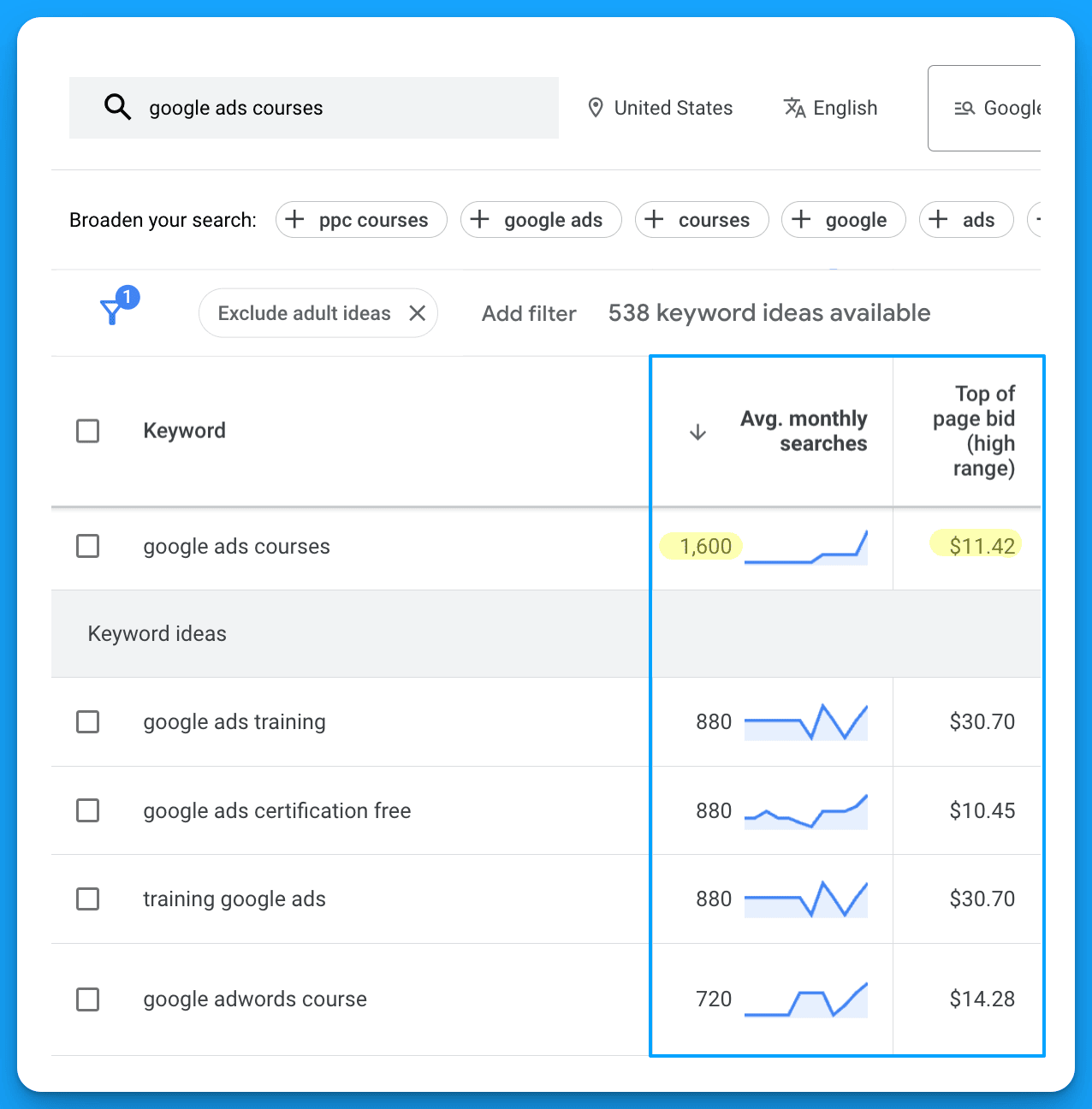
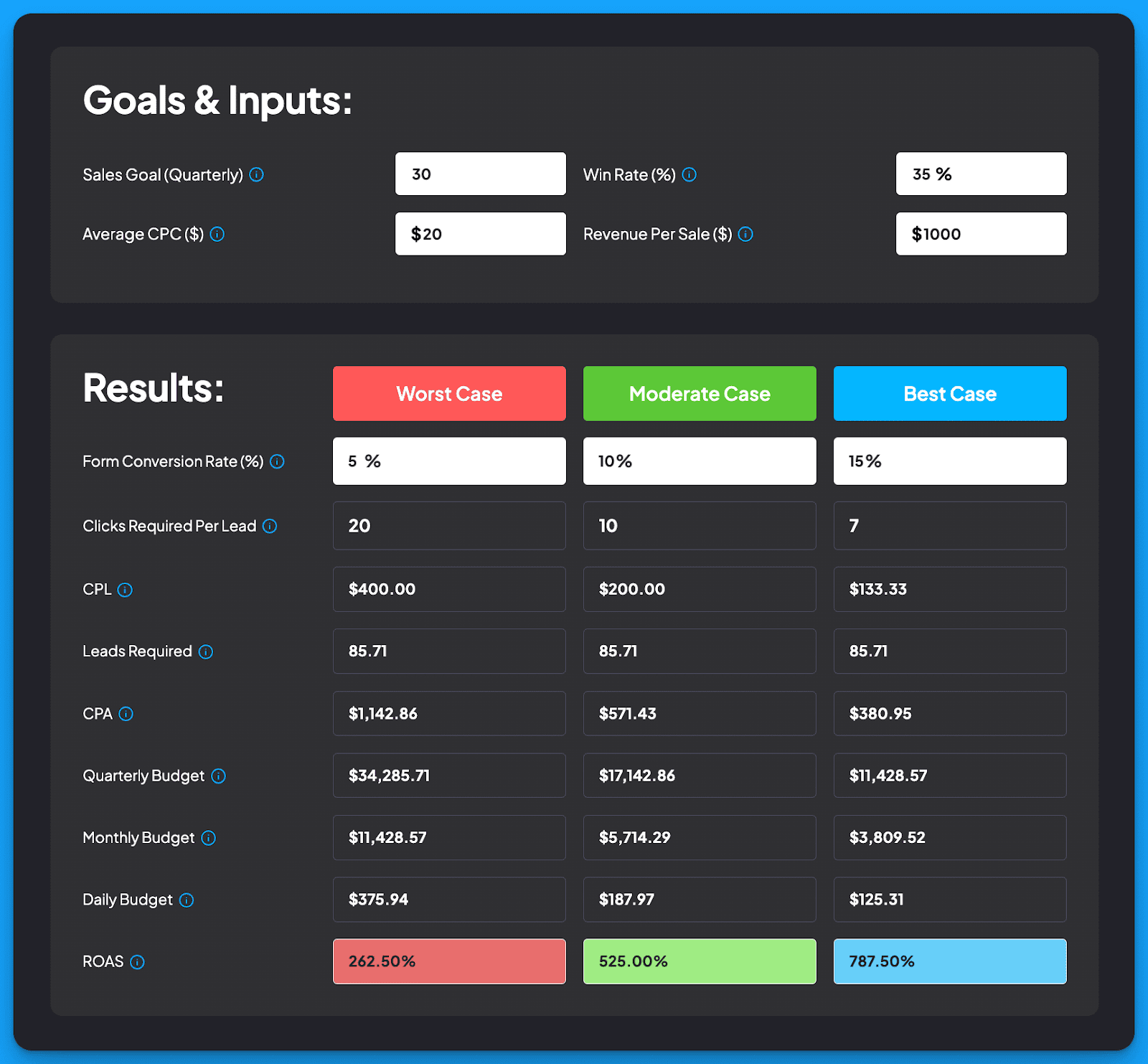




















.png)










